Cobra Electronics MRHH125 Marine VHF Transceiver User Manual MRHH125 manual Part 2
Cobra Electronics Corporation Marine VHF Transceiver MRHH125 manual Part 2
Contents
- 1. User Manual Part 1
- 2. User Manual Part 2
User Manual Part 2
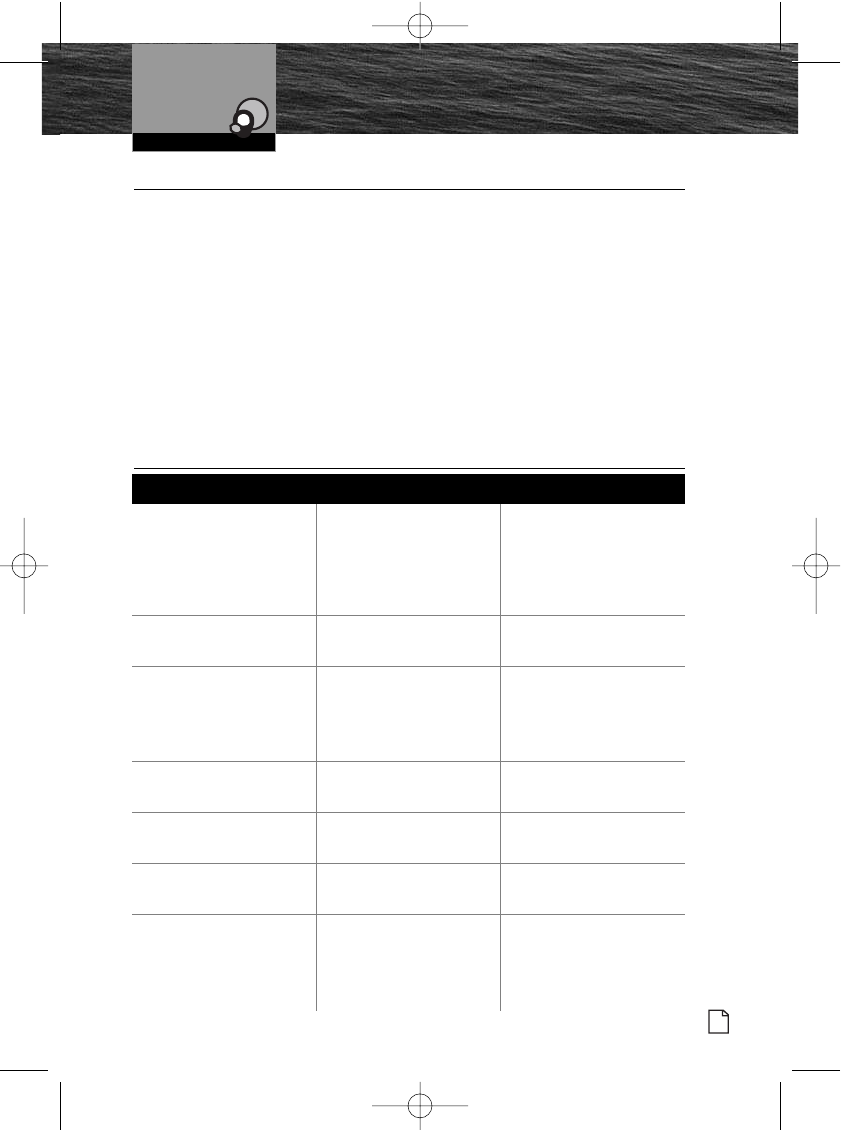
Maintenance and
Troubleshooting
VHF Marine Radio Protocols
Operating Your Radio
No display on LCD when
radio is turned On
Batteries are exhausted
Batteries not installed
properly
Recharge or
replace batteries
Remove batteries and
reinstall according to
polarity markings
NiMH batteries run
down quickly
Batteries are at the
end of their life
Replace with new
batteries
Will transmit at
one (1) watt, but not
at three (3) watts
Batteries are low
Selected channel is
limited to one (1) watt
Recharge or
replace batteries
Switch to
another channel
Will not transmit Selected channel is
limited to receive only
Switch to
another channel
No sound from speaker Volume level is too low Re-adjust volume
No response to
button press
Button lock is On Press Backlight/
Key Lock button
No answer to calls Out of range of
other station
Signal is blocked
by terrain
Switch to three (3) watts
or move closer
Move until you have a “line-
of-sight” to the other station
Problem Possible Cause(s) Solution(s)
Maintenance •
Very little maintenance is required to keep your CobraMarine VHF radio
in good operating condition:
■ Keep the radio clean by wiping with a soft cloth and mild detergent. Do not use
solvents or harsh or abrasive cleaners, which could damage the case or scratch
the LCD screen.
■ If the radio is exposed to salt water, wipe with a soft, moist cloth at least once a day to
prevent buildup of salt deposits, which could interfere with button operation.
■ If the radio will be stored for a long period, such as over the winter,
remove the batteries from the battery tray and store them in a separate
package. This is especially important if you are using alkaline batteries.
Troubleshooting •
27
Nothing Comes Close to a Cobra®
10222_MRHH125_En_F.qxp 6/28/07 5:03 PM Page 27
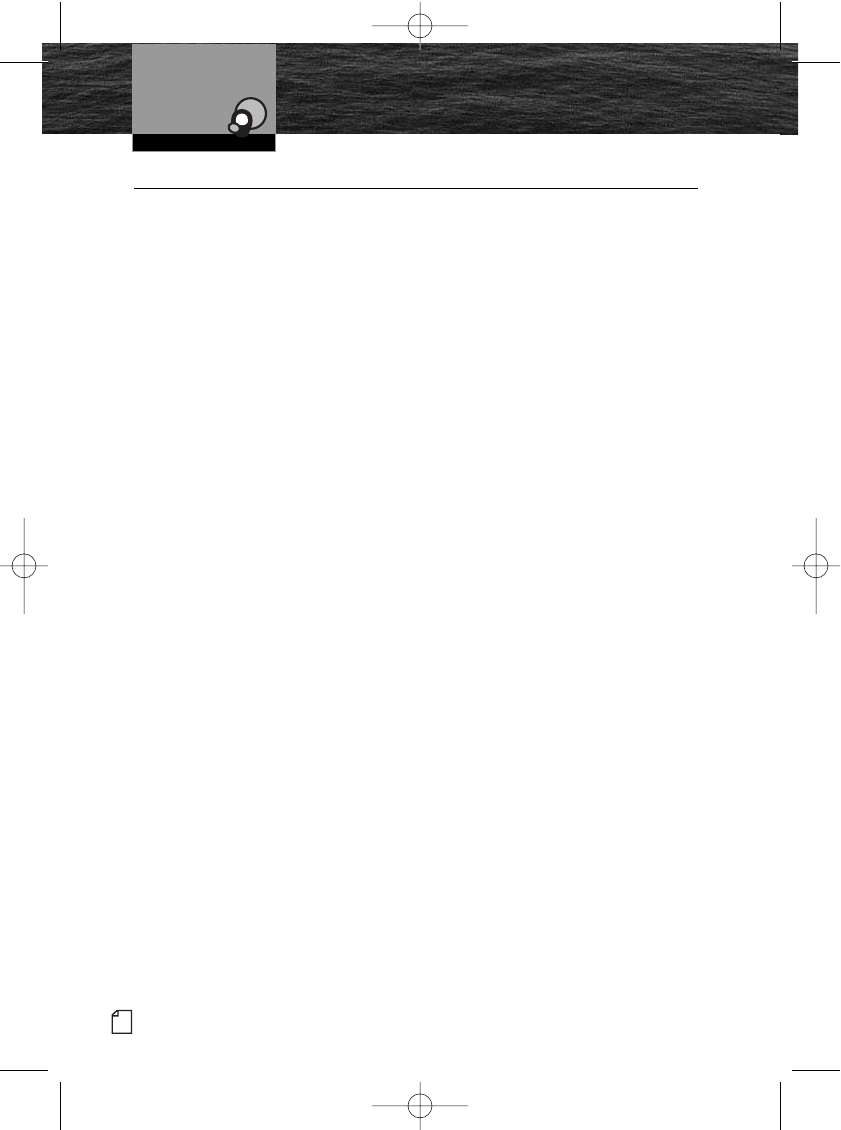
VHF Marine Radio Protocols
28 English
VHF Marine Radio
Procedures
VHF Marine Radio Procedures •
Maintain Your Watch
Whenever your boat is underway, the radio must be turned On and be tuned to
Channel 16 except when being used for messages.
Power
Try 1 watt first if the station being called is within a few miles. If there is no answer,
switch to 3 watts and call again. Remember, the lower wattage output will conserve
your battery and minimize interference to other users.
Calling Coast Stations
Call a coast station on its assigned channel. You may use Channel 16 when you do
not know the assigned channel.
Calling Other Vessels
Call other vessels on Channel 16 or on Channel 9. (Channel 9 is preferred for
recreational vessel use.) You may also call on ship-to-ship channels when you
know that the vessel is listening on a ship-to-ship channel.
Initial Calling on Channel 16 or 9
The use of Channel 16 is permitted for making initial contact (hailing) another
vessel. The limits on calling must be followed. Be reminded, Channel 16’s most
important function is for Emergency Messages. If for some reason, Channel 16
is congested, the use of Channel 9, especially in U.S. waters, may be used as the
initial contact (hailing) channel for non-emergency communication.
Limits on Calling
You must not call the same station for more than 30 seconds at a time.
If you do not get a reply, wait at least two (2) minutes before calling again.
After three (3) calling periods, wait at least 15 minutes before calling again.
Change Channels
After contacting another station on a calling channel, change immediately
to a channel which is available for the type of message you want to send.
Station Identification
Identify, in English, your station by your FCC call sign, vessel name or the state
registration number, at both the beginning and at the end of the message.
10222_MRHH125_En_F.qxp 6/28/07 5:03 PM Page 28
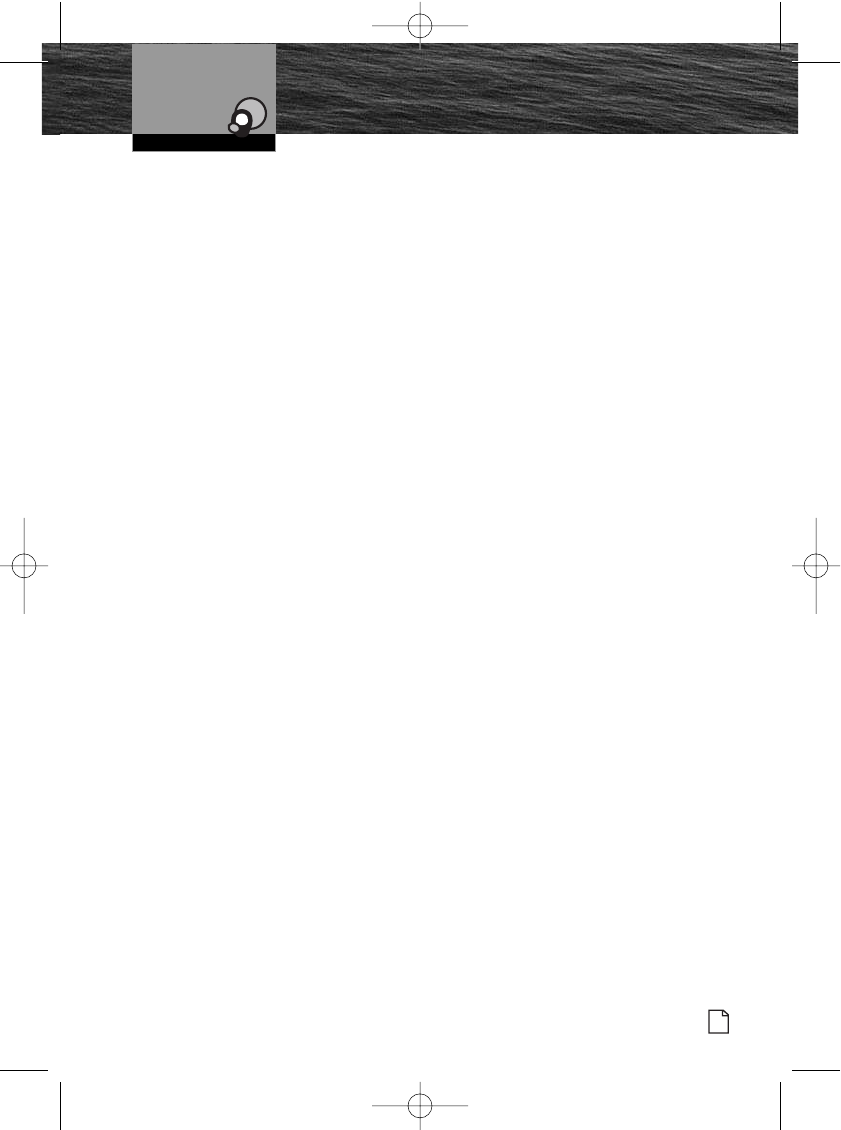
VHF Marine Radio Protocols
29
Nothing Comes Close to a Cobra®
VHF Marine Radio
Procedures
Prohibited Communications
You MUST NOT transmit:
■ False distress or emergency messages.
■ Messages containing obscene, indecent or profane language.
■ General calls, signals or messages (messages not addressed to a particular
station) on Channel 16, except in an emergency or if you are testing your radio.
■ When you are on land.
10222_MRHH125_En_F.qxp 6/28/07 5:03 PM Page 29
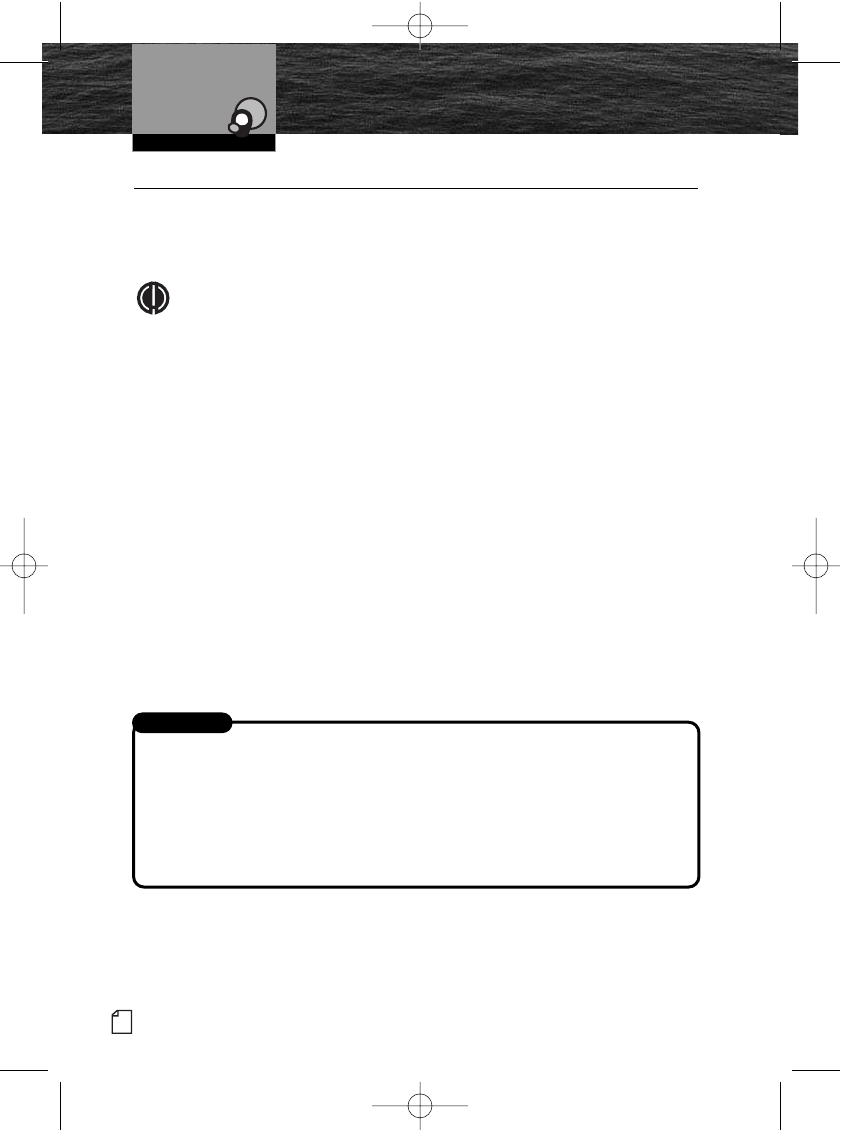
VHF Marine Radio Protocols
For Example
30 English
Voice Calling
Voice Calling •
You are required to listen to Channel 16 while standing by. Channel 16 is the
distress and safety channel used for establishing initial contact with another station
and for emergency communication. The Coast Guard also monitors Channel 16 for
safety purposes for everyone on the water.
NOTE
Channel 9 may be used by recreational vessels for general-purpose calling.
This frequency should be used whenever possible to help relieve congestion
on Channel 16. The Coast Guard generally does not make urgent marine
information broadcasts or weather warnings on Channel 9. Boaters are still
asked to “keep watch” on Channel 16 whenever the radio is turned on and
not in use with another station.
To call another vessel or shore installation (e.g, lock or bridge tender):
■Make sure the radio is On.
■Make sure you are in standby listening mode on Channel 16. Make sure
Channel 16 is not in use.
■When the channel is open (quiet), press the Talk button and call a vessel. Hold
the radio or microphone several inches from your face and speak clearly and
distinctly in a normal voice tone. Say “name or station being called,” “THIS IS
[your vessel name or call sign].”
■Once contact is made, you must leave Channel 16 and go to another working
channel. See channel listing in the appendix.
The vessel Corsair is calling the vessel Vagabond:
Corsair: “Vagabond, this is Corsair. Over.”
Vagabond: “Please switch and answer on Channel 68 (or any proper working
channel). Over.”
Corsair: “Switching to Channel 68. Over.”
10222_MRHH125_En_F.qxp 6/28/07 5:03 PM Page 30
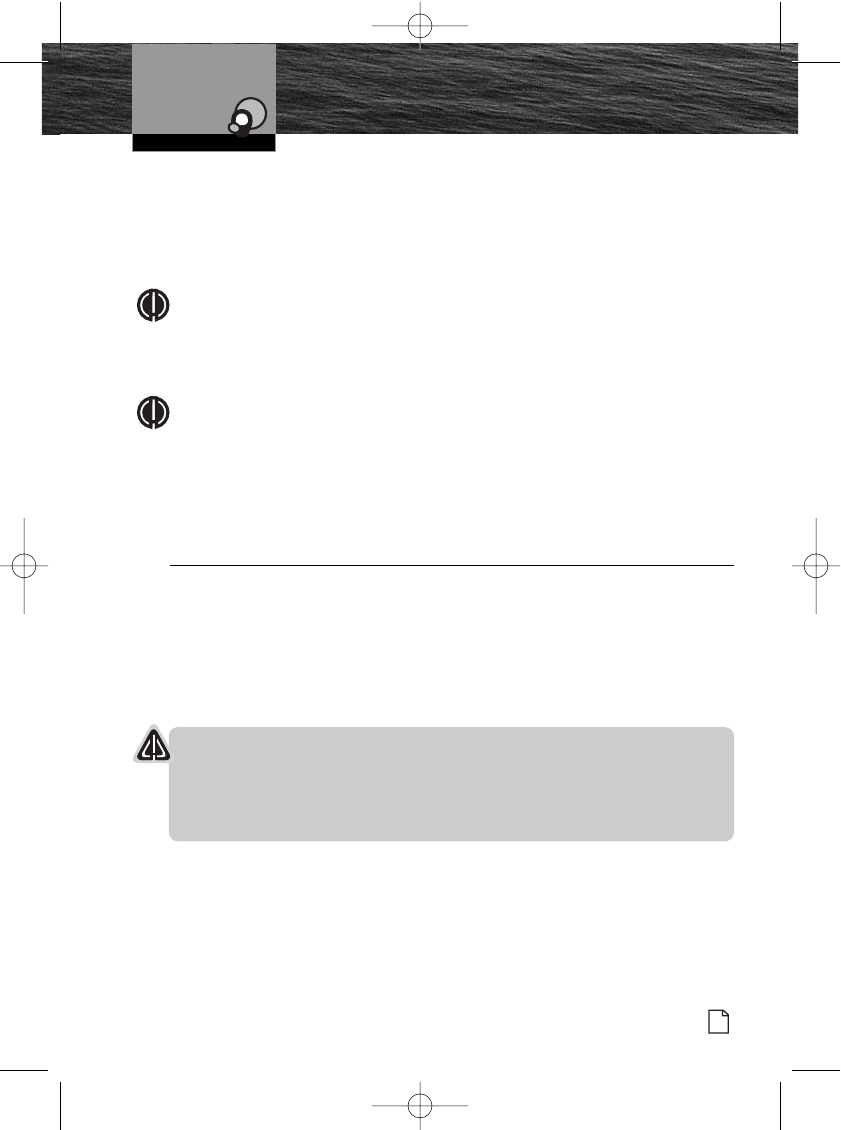
VHF Marine Radio Protocols
31
Nothing Comes Close to a Cobra®
Voice Calling &
Radiotelephone Calls
■If the other party does not respond, wait two (2) minutes and repeat. You are
permitted to attempt contact three (3) times, two (2) minutes apart. If you still
have not made contact, wait 15 minutes before trying again.
■After communications are completed, each vessel must sign off with its call
sign or vessel name and the word “out” and return to Channel 16.
NOTE
For best sound quality at the station you are calling, hold the microphone on
the front of the radio at least 2 in. (51 mm) from your mouth and slightly off to
one (1) side. Speak in a normal tone of voice.
NOTE
“Over and Out”
The most commonly misused procedure words are “over and out” within the
same transmission. “Over” means you expect a reply. “Out” means you are
finished and do not expect a reply.
Radiotelephone Calls •
Boaters may make and receive radiotelephone calls to and from any number on
the telephone network by using the services of public coast stations. For a fee,
calls can be made between your radio and telephones on land, sea and in the air.
See the appendix for the public correspondence (marine operator) channels.
If you plan to use these services, consider registering with the operator of the
public coast station that you plan to work through. These services can provide
you with detailed information and procedures to follow.
NOTICE
You may disclose privileged information during a radiotelephone call.
Keep in mind that your transmission is NOT private, as it is on a regular
telephone. Both sides of the conversation are being broadcast and can be
heard by anyone who has a radio and tunes to the channel you are using.
10222_MRHH125_En_F.qxp 6/28/07 5:03 PM Page 31
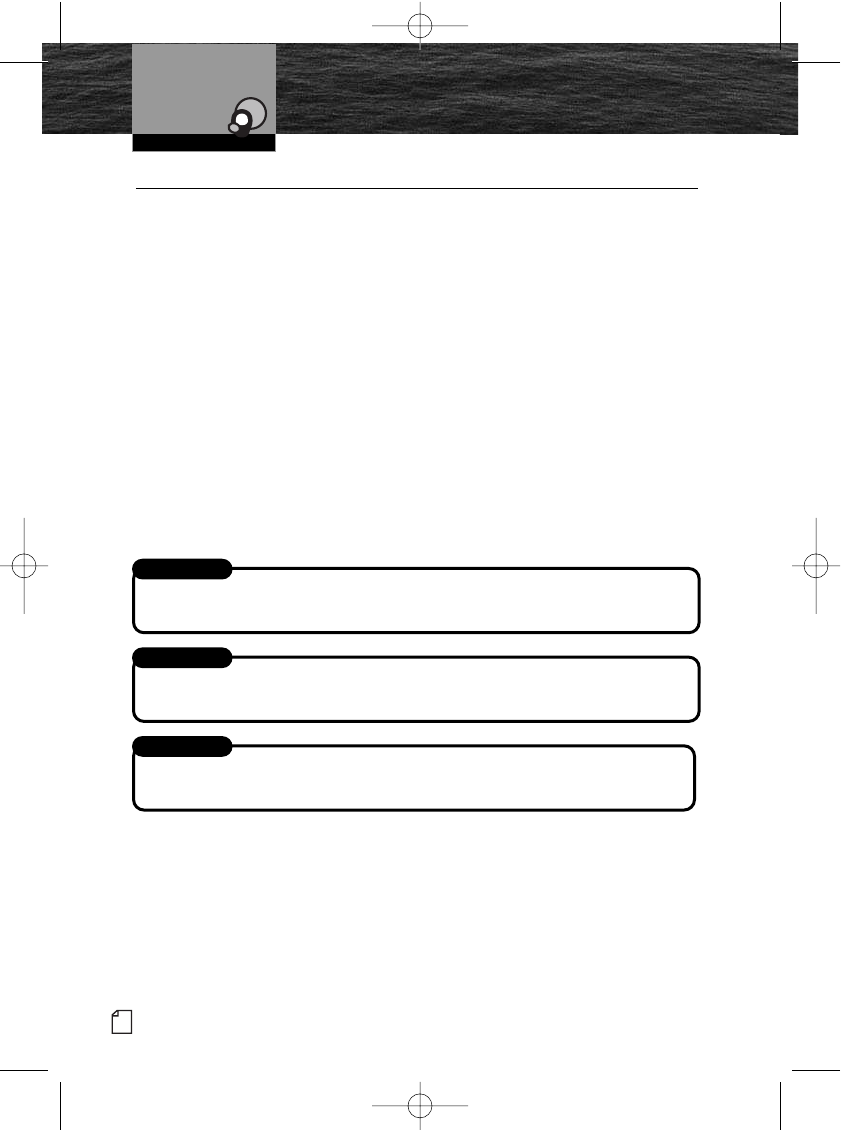
Marine Emergency Signals
The three (3) spoken international emergency signals are:
The distress signal MAYDAY is used to indicate that a station is threatened by grave
and imminent danger and requests immediate assistance.
The urgency signal PAN PAN is used when the safety of the vessel or person is in
jeopardy. (This signal is properly pronounced pahn pahn.)
The safety signal SECURITE is used for messages about the safety of navigation or
important weather warnings. (This signal is properly pronounced see-cure-ee-tay.)
When using an international emergency signal, the appropriate signal is to be
spoken three (3) times prior to the message.
MAYDAY
PAN PAN
SECURITE
VHF Marine Radio Protocols
32 English
Emergency Messages and
Distress Procedure
Emergency Messages and Distress Procedure •
The ability to summon assistance in an emergency is the primary reason to have a
VHF marine radio. The marine environment can be unforgiving, and what may initially
be a minor problem can rapidly develop into a situation beyond your control.
The Coast Guard monitors Channel 16, responds to all distress calls, and coordinates
all search and rescue efforts. Depending on the availability of other capable vessels or
commercial assistance operators in your vicinity, Coast Guard or Coast Guard
Auxiliary craft may be dispatched.
In any event, communicate with the Coast Guard as soon as you experience difficulties
and before your situation becomes an emergency. Use the emergency message
procedures only after your situation has become grave or you are faced with a sudden
danger threatening life or property and requiring immediate help. Use Channel 16 to
communicate your emergency message. Make sure you transmit on high power. If
you are merely out of gas, do not send an emergency message. Drop your anchor
and call a friend or marina to bring the fuel you need or to give you a tow.
10222_MRHH125_En_F.qxp 6/28/07 5:03 PM Page 32
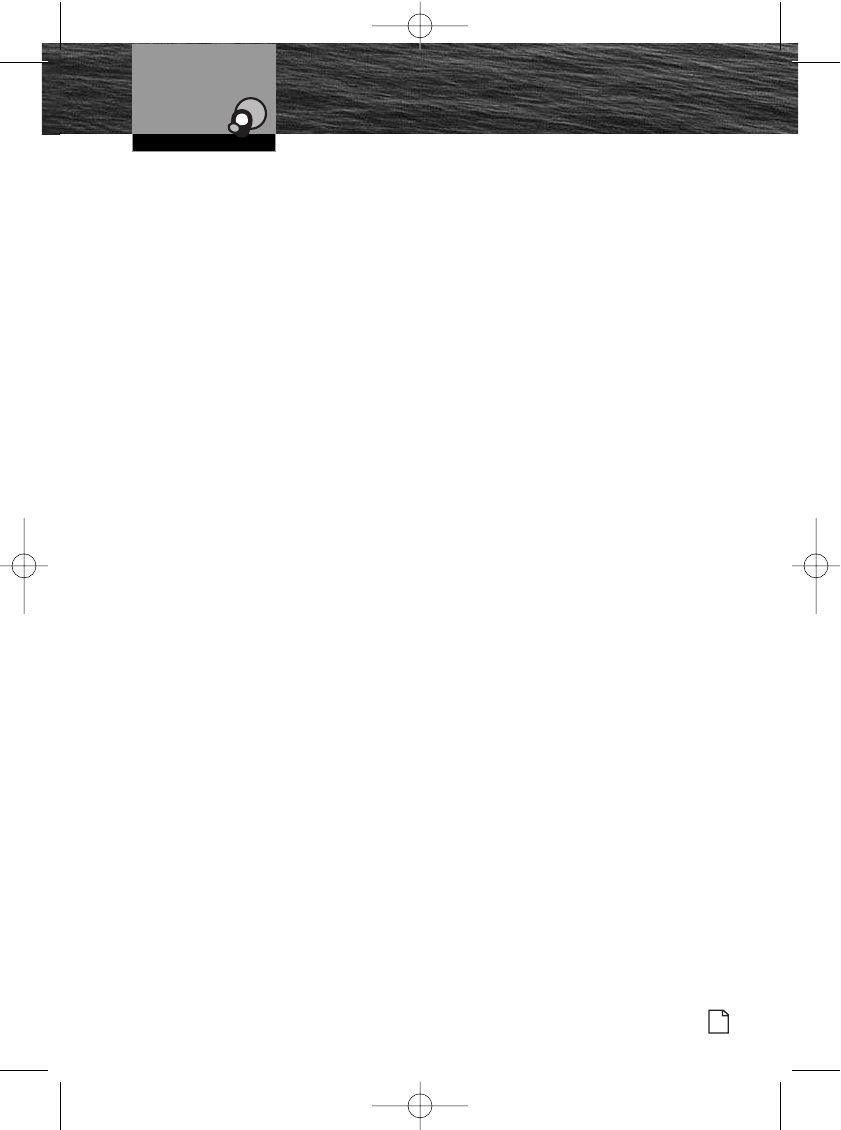
VHF Marine Radio Protocols
33
Nothing Comes Close to a Cobra®
Emergency Messages and
Distress Procedure
If You Hear a Distress Call
You must give any message beginning with one (1) of these signals priority over any
other messages. ALL stations MUST remain silent on Channel 16 for the duration of
the emergency unless the message relates directly to the emergency.
If you hear a distress message from a vessel, stand by your radio. If it is not
answered, YOU should answer. If the distressed vessel is not nearby, wait a short
time for others who may be closer to acknowledge. Even if you cannot render direct
assistance, you may be in a position to relay the message.
Marine Distress Procedure
Speak slowly — clearly — calmly.
1. Make sure your radio is On.
2. Select Channel 16.
3. Press Talk button and say:
“MAYDAY — MAYDAY — MAYDAY.”
(Or “PAN PAN— PAN PAN— PAN PAN,”
or “SECURITE — SECURITE — SECURITE.”)
4. Say:
“THIS IS [your vessel name or call sign],” repeated three (3) times.
5. Say:
“MAYDAY (or “PAN PAN” or “SECURITE”)
[your vessel name or call sign].
6. Tell where you are:
(what navigational aids or landmarks are nearby).
7. State the nature of your distress.
8. State the kind of assistance needed.
9. Give number of persons aboard and conditions of any injured.
10. Estimate present seaworthiness of your vessel.
11. Briefly describe your vessel (length, type, color, hull).
12. Say:
“I WILL BE LISTENING ON CHANNEL 16.”
13. End message by saying:
“THIS IS [your vessel name or call sign]. OVER.”
14. Release Talk button and listen. Someone should answer.
If not, repeat the call, beginning at step 3 above.
Keep the radio nearby. Even after your message has been received, the Coast Guard
can find you more quickly if you can transmit a signal for a rescue boat to hone in on.
10222_MRHH125_En_F.qxp 6/28/07 5:03 PM Page 33
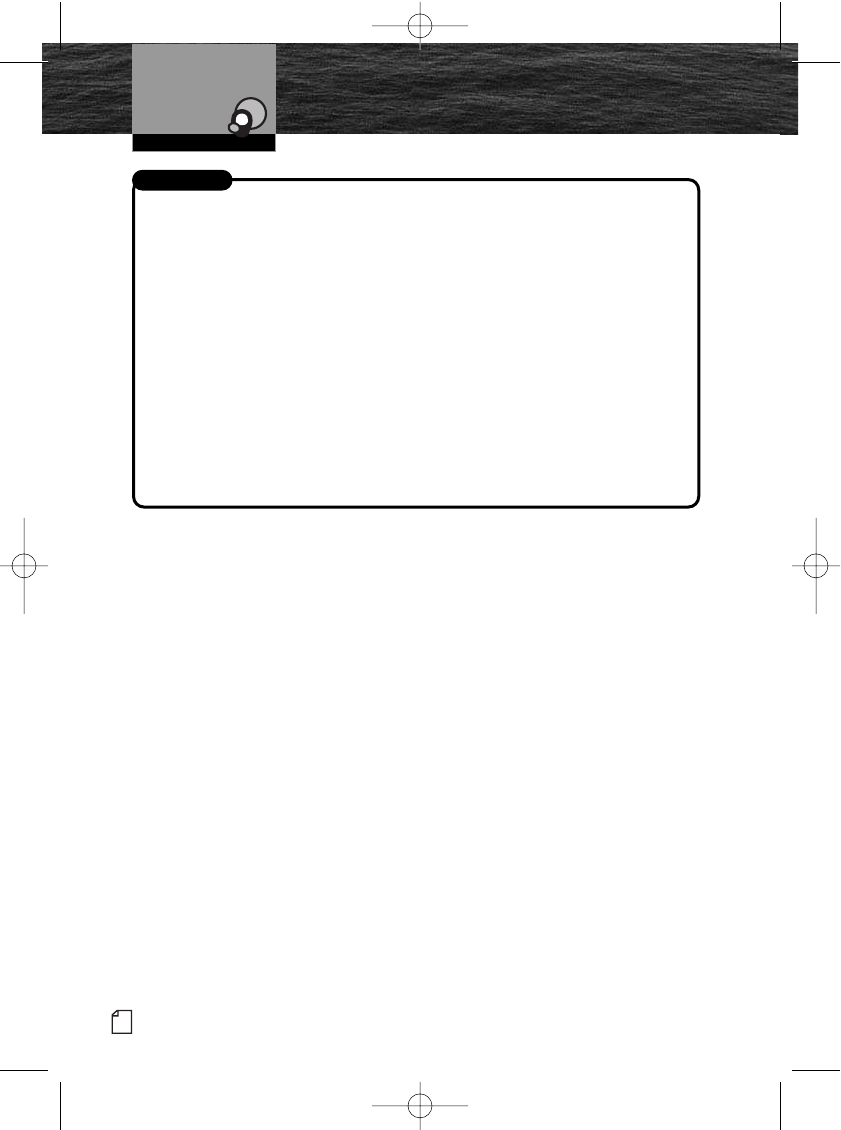
For Example
VHF Marine Radio Protocols
34 English
Emergency Messages
and Distress Procedure
“Mayday — Mayday — Mayday”
“This is Corsair — Corsair — Corsair” [or “IL 1234 AB,” repeated three (3) times]
“Mayday Corsair (or IL 1234 AB)”
“Navy Pier bears 220 degrees magnetic — distance 5 miles”
“Struck submerged object and flooding — need pump and tow”
“Four (4) adults, three (3) children aboard — no one injured”
“Estimate we will remain afloat one-half hour”
“Corsair (or IL 1234 AB) is 26 ft sloop with blue hull and tan deck house”
“I will be listening on Channel 16”
“This is Corsair (or IL 1234 AB)”
“Over”
It is a good idea to write out a script of the message form and post it where you
and others on your vessel can see it when an emergency message needs to be sent.
10222_MRHH125_En_F.qxp 6/28/07 5:03 PM Page 34
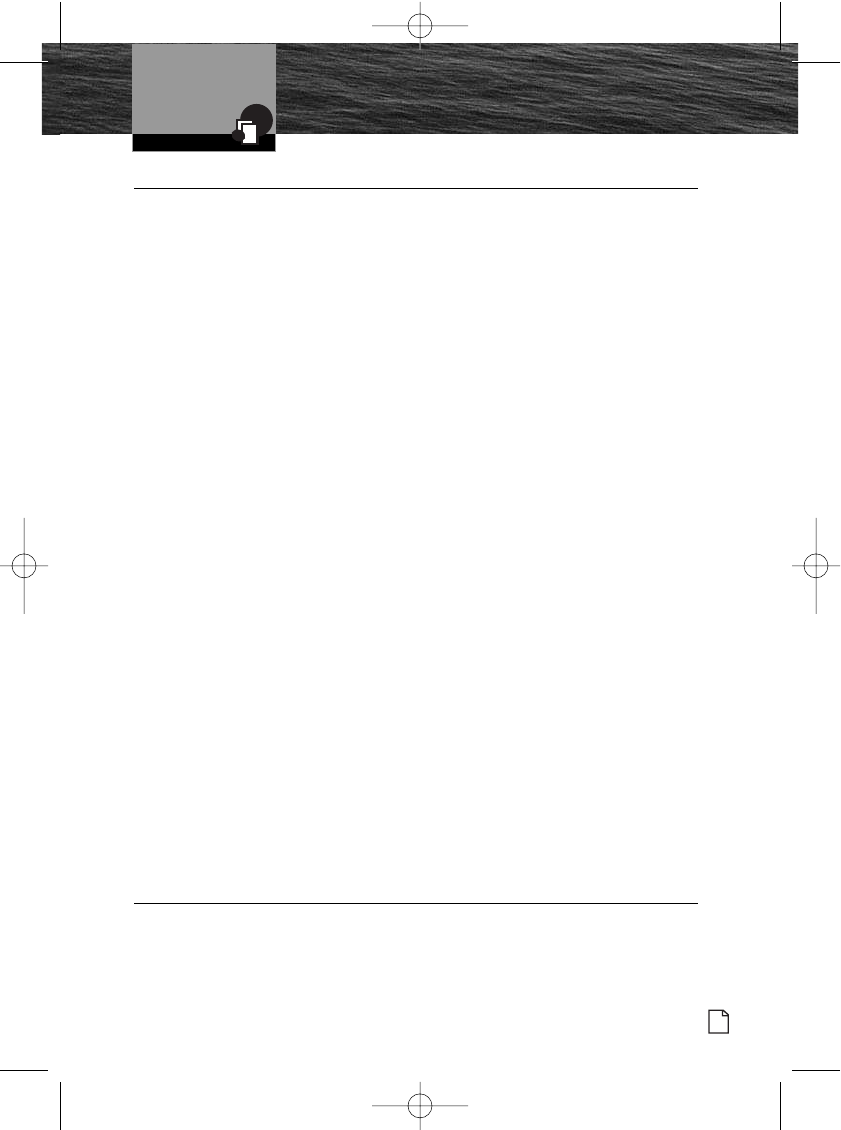
Warranty
35
Nothing Comes Close to a Cobra®
Warranty and Trademark
Acknowledgement
Limited 1-Year Warranty •
For Products Purchased In The U.S.A.
Cobra Electronics Corporation warrants that its CobraMarine VHF radio, and the
component parts thereof, will be free of defects in workmanship and materials
for a period of One (1) year from the date of first consumer purchase. This warranty
may be enforced by the first consumer purchaser, provided that the product is
used within the U.S.A.
Cobra will, without charge, repair or replace, at its option, defective radios,
products or component parts upon delivery to the Cobra Factory Service
department, accompanied by proof of the date of first consumer purchase,
such as a duplicated copy of a sales receipt.
You must pay any initial shipping charges required to ship the product for
warranty service, but the return charges will be at Cobra’s expense, if the
product is repaired or replaced under warranty. This warranty gives you
specific legal rights, and you may also have other rights which may vary
from state to state.
Exclusions: This limited warranty does not apply:
1. To any product damaged by accident.
2. In the event of misuse or abuse of the product, or as a result
of unauthorized alterations or repairs.
3. If the serial number has been altered, defaced, or removed.
4. If the owner of the product resides outside the U.S.A.
All implied warranties, including warranties of merchantability and fitness for a
particular purpose are limited in duration to the length of this warranty. Cobra
shall not be liable for any incidental, consequential or other damages; including,
without limitation, damages resulting from loss of use or cost of installation.
Some states do not allow limitations on how long an implied warranty lasts and/or
do not allow the exclusion or limitation of incidental or consequential damages,
so the above limitations may not apply to you.
For Products Purchased Outside The U.S.A.
Please contact your local dealer for warranty information.
Trademark Acknowledgement •
Cobra®, CobraMarine®, Nothing Comes Close to a Cobra®, and the snake design are
registered trademarks of Cobra Electronics Corporation, U.S.A..
Cobra Electronics Corporation™ is a trademark of Cobra Electronics Corporation,
U.S.A.
10222_MRHH125_En_F.qxp 6/28/07 5:03 PM Page 35
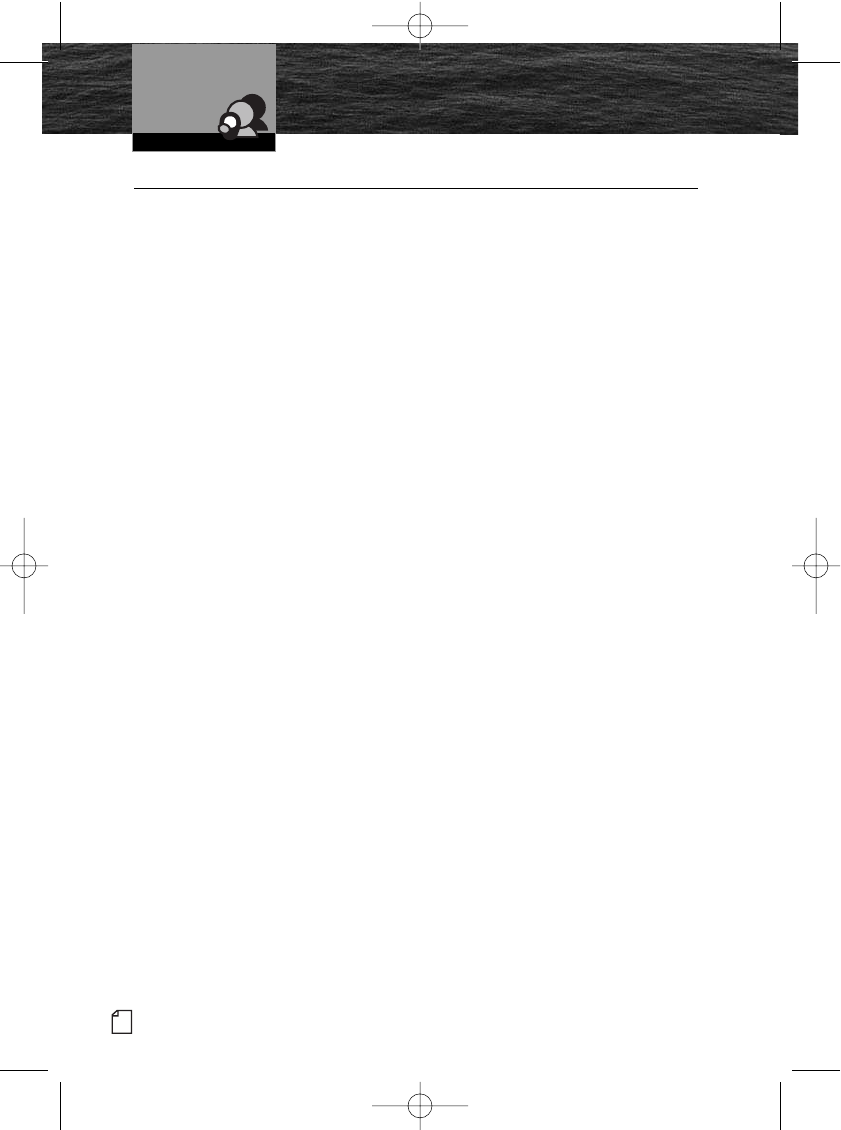
VHF Marine Radio Protocols
36 English
Product Service •
For any questions about operating or installing this new Cobra product, or if
parts are missing…PLEASE CALL COBRA FIRST…do not return this
product to the store.
If this product should require factory service, please call Cobra first before sending the
product. This will ensure the fastest turnaround time on any repair. If Cobra asks that
the product be sent to its factory, the following must be furnished to have the product
serviced and returned:
1. For Warranty Repair include some form of proof-of-purchase, such as a
mechanical reproduction or carbon of a sales receipt. Make sure the date of
purchase and product model number are clearly readable. If the originals are sent,
they cannot be returned;
2. Send the entire product;
3. Enclose a description of what is happening with the product. Include a typed or
clearly printed name and address of where the product is to be returned, with
phone number (required for shipment).
4. Pack the product securely to prevent damage in transit. If possible,
use the original packing material;
5. Ship prepaid and insured by way of a traceable carrier such as
United Parcel Service (UPS) or Priority Mail to avoid loss in transit to:
Cobra Factory Service
Cobra Electronics Corporation
6500 West Cortland Street
Chicago, Illinois 60707 U.S.A.;
6. If the product is in warranty, upon receipt of the product, it will either be repaired
or exchanged depending on the model. Please allow approximately
3 – 4 weeks before contacting Cobra for status. If the product is out of warranty,
a letter will automatically be sent with information as to the repair charge or
replacement charge.
For any questions, please call 773-889-3087 for assistance.
Product Service
Customer Service
10222_MRHH125_En_F.qxp 6/28/07 5:03 PM Page 36
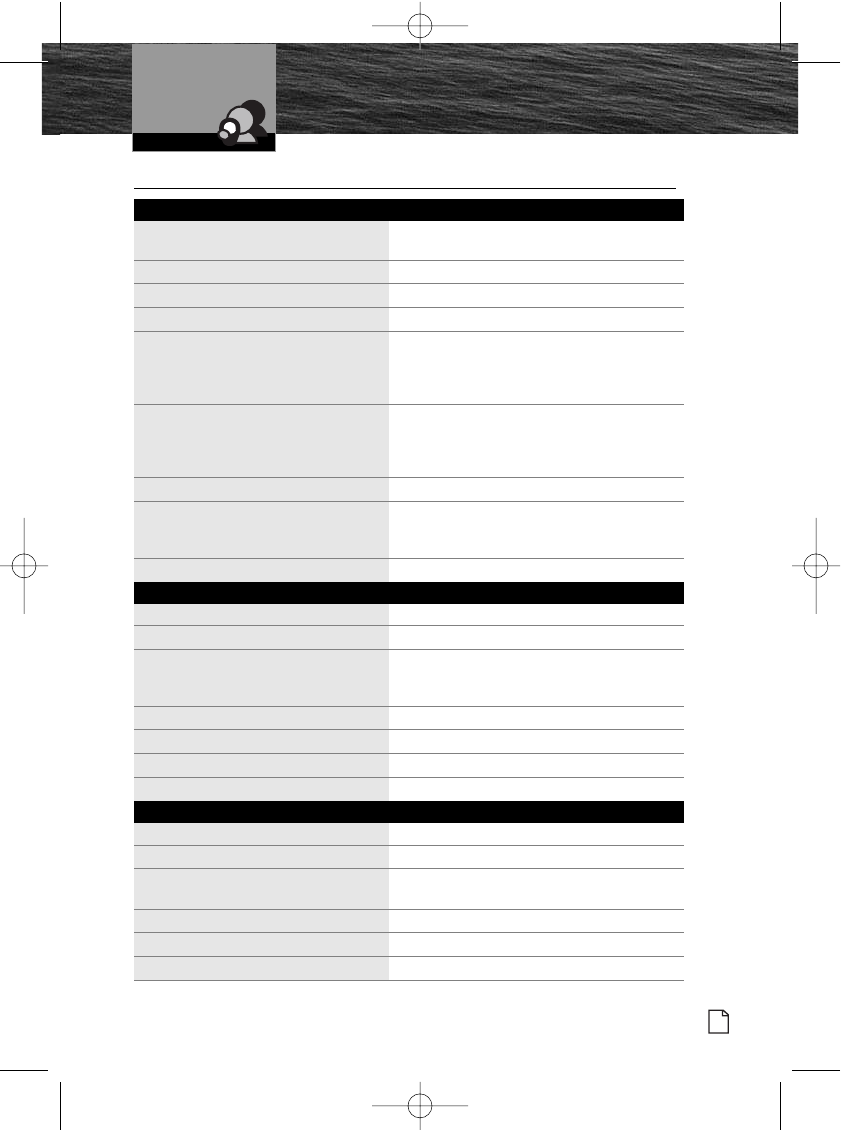
Introduction
37
Nothing Comes Close to a Cobra®
Specifications
Specifications
Specifications •
General
Number of Channels All U.S., Canadian, International and
NOAA Weather Channels
Channel Spacing 25 kHz
Modulation 5 kHz Max.
Input Voltage 6.0 VDC
Battery Life: NiMH: 9.4 hours @ 3 watts
5% TX, 5% RX, 90% Standby 12 hours @ 1 watt
Alkaline: 26 hours @ 3 watts
33 hours @ 1 watt
Current Drain:
Standby 40 mA
Receive (Rx) 100 mA
Transmit (Tx) 1.1 A @ High Power, 700 mA @ Low Power
Temperature Range -20˚C to 50˚C
Radio Dimensions 4.0" x 2.4" x 1.2"
(102 mm x 62 mm x 31 mm) not
including antenna
Radio Weight 0 lbs 5 oz. (228 g) without batteries
Receiver
Frequency Range 156.050 to 163.275 MHz
Receiver Type Double Conversion Super-Heterodyne
Sensitivity:
20 dB Quieting 0.35 uV
12 dB Sinad 0.30 uV
Adjacent Channel Selectivity -60 dB
Intermodulation and Rejection -60 dB
Spurious and Image Rejection -60 dB
AF Output 250 mW @ 8 Ohms
Transmitter
Frequency Range (Tx): 156.025 to 157.425 MHz
RF Output Power 1 or 3 watts
Spurious Emissions -60 dB @ High Power, -55 dB @ Low
Power
Microphone Type Condenser
Frequency Stability +/-10 ppm
FM Hum and Noise 40 dB
10222_MRHH125_En_F.qxp 6/28/07 5:03 PM Page 37
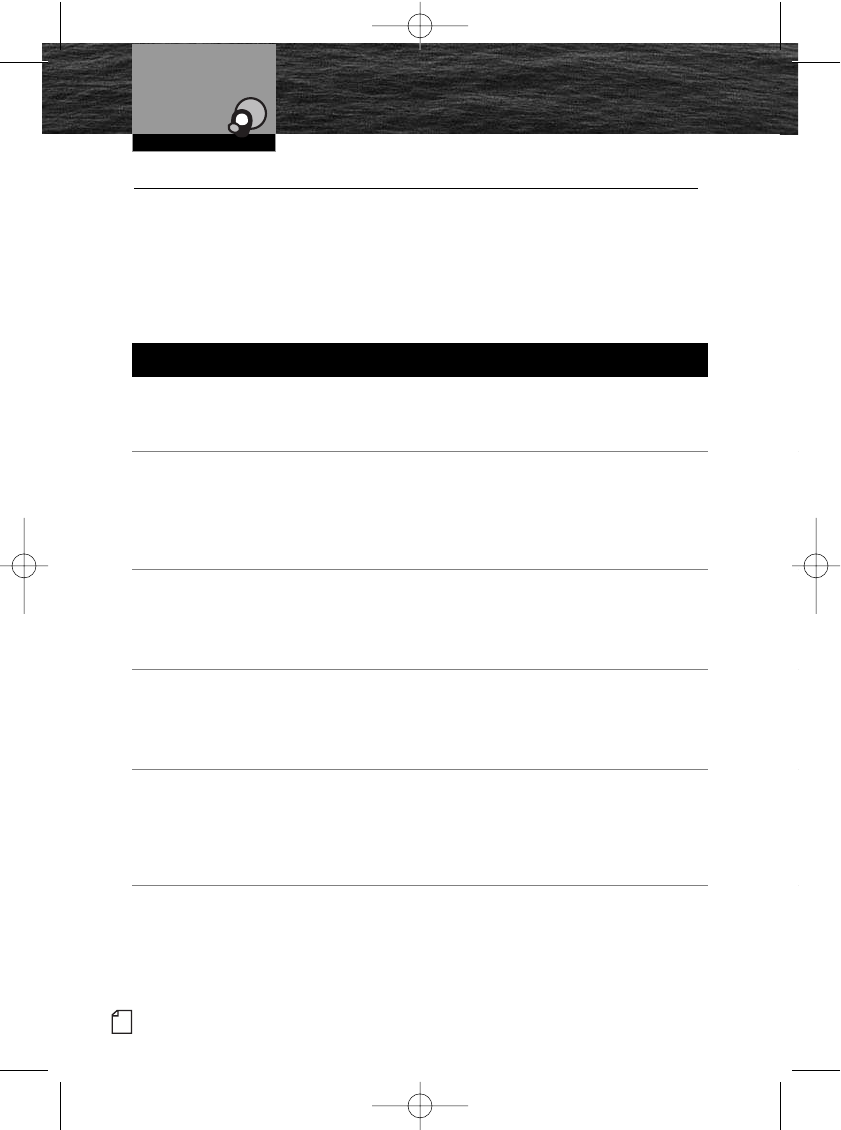
Appendix
38
English/Español
VHF Marine
Channel Assignments
VHF Marine Channel Assignments •
Three (3) sets of VHF channels have been established for marine use in the U.S.A.,
Canada and the rest of the world (International). Most of the channels are the same
for all three (3) maps, but there are definite differences (see table on the following
pages). Your radio has all three (3) maps built into it and will operate correctly in
whichever area you choose.
The following is a brief outline of the channel assignments in the U.S.A. Channel Map.
Distress, Safety, and Calling
Channel 16
Getting the attention of another station (calling) or in emergencies (distress and safety).
Calling
Channel 9
General-purpose (non-emergency) calling by non-commercial vessels. Recreational boaters are
urged to use this channel to reduce congestion on Channel 16.
Intership Safety
Channel 6
Ship-to-ship safety messages and for search and rescue messages to Coast Guard ships
and aircraft.
Coast Guard Liaison
Channel 22A
To talk to the Coast Guard, Canadian Coast Guard (non-emergency) after making contact on
Channel 16.
Non-Commercial
Channels 68*, 69, 71, 72, 78A, 79A*, 80A*
Working channels for small vessels. Messages must be about needs of the vessel, such as
fishing reports, berthing and rendezvous. Use Channel 72 only for ship-to-ship messages.
Commercial
Channels 1A, 7A, 8, 9, 10, 11, 18A, 19A, 63A, 67, 72, 79A, 80A, 88A*
Working channels for working ships only. Messages must be about business or needs
of the ship. Use Channels 8, 67, 72 and 88A only for ship-to-ship messages.
Channel Assignments (English)
10222_MRHH125_En_F.qxp 6/28/07 5:03 PM Page 38
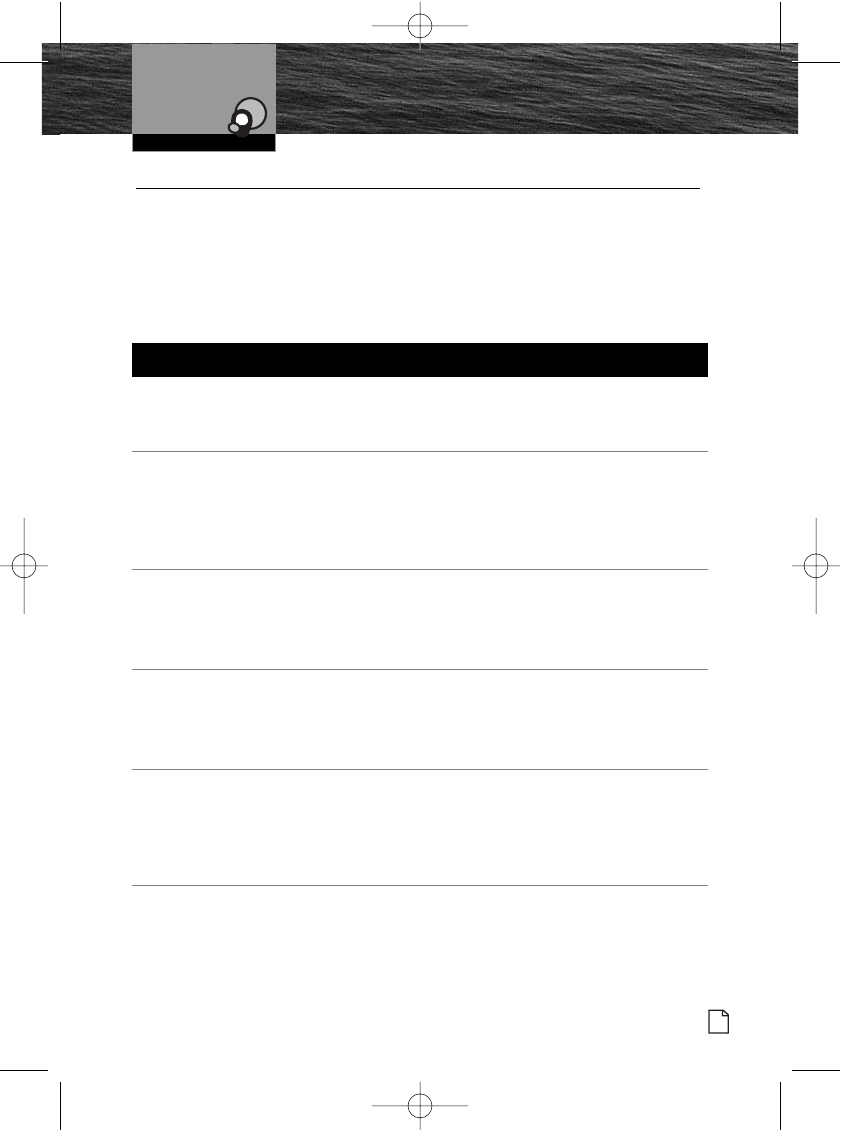
Apéndice
39
Nothing Comes Close to a Cobra®/Nada se compara a Cobra®
Asignación de canales de VHF
para radiocomunicación marítima
Asignación de canales de VHF para radiocomunicación marítima•
Existen tres (3) juegos de canales VHF para uso marítimo en los EE.UU., Canadá y el
resto del mundo (internacional). La mayoría de los canales coinciden en los tres (3)
mapas, pero sin duda existen diferencias (consulte las tablas en las páginas
siguientes). El radio incorpora los tres (3) mapas y funcionará correctamente en
cualquiera de las tres áreas.
A continuación presentamos en forma resumida las asignaciones de canales del
Mapa de canales para EE.UU.
Auxilio, seguridad y llamadas
Canal 16
Para ser oídos por otra estación (llamadas) o en casos de emergencia (auxilio y seguridad).
Llamadas
Canal 9
Llamadas de carácter general (excepto casos de emergencia) para embarcaciones no comerciales.
Se le pide encarecidamente a la tripulación de las embarcaciones recreativas usar este canal
para reducir la congestión del canal 16.
Seguridad entre embarcaciones
Canal 6
Para mensajes de seguridad entre embarcaciones y para mensajes de búsqueda y rescate
enviados a barcos y aviones de la guardia costera.
Enlace con la guardia costera
Canal 22A
Para hablar con las guardias costeras estadounidenses y canadienses (excepto casos de
emergencia) tras haber establecido contacto por el canal 16.
No comerciales
Canales 68*, 69, 71, 72, 78A, 79A*, 80A*
Canales activos para pequeñas embarcaciones. Los mensajes deberán estar relacionados con
necesidades de las embarcaciones, como por ejemplo, informes de pesca, atraques y
agrupamientos. Use el canal 72 solamente para mensajes entre embarcaciones.
Comerciales
Canales 1A, 7A, 8, 9, 10, 11, 18A, 19A, 63A, 67, 72, 79A, 80A, 88A*
Canales activos para embarcaciones activas solamente. Los mensajes deberán estar
relacionados con la actividad comercial o las necesidades de la embarcación. Use los
canales 8, 67, 72 y 88A solamente para mensajes entre embarcaciones.
Asignaciones de canales (Español)
10222_MRHH125_En_F.qxp 6/28/07 5:03 PM Page 39
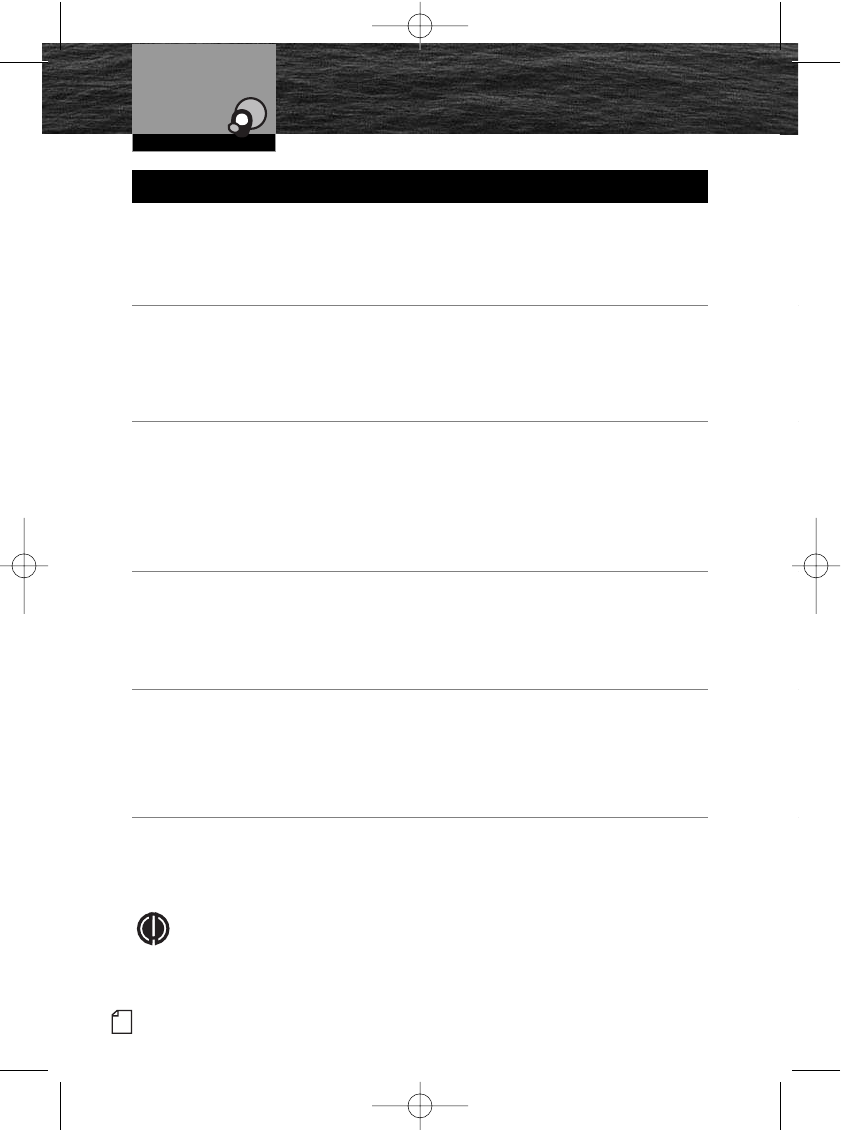
Public Correspondence (Marine Operator)
Channels 24, 25, 26, 27, 28, 60, 61, 84, 84A, 85, 85A, 86, 86A, 87, 87A, 88*
For calls to marine operators at public coast stations. You can make and receive telephone calls
through these stations.
Port Operations
Channels 1A*, 5A*, 12*, 14*, 18, 19, 20A, 21, 22, 63A*, 65A, 66A, 73, 74, 75, 76, 77*, 79, 80,
81, 82
Used for directing the movement of ships in or near ports, locks or waterways. Messages
must be about operational handling, movement and safety of ships.
Navigational
Channels 13, 67
Channels are available to all vessels. Messages must be about navigation, including passing
or meeting other vessels. These are also the main working channels for most locks and
drawbridges. You must keep your messages short and power output at no more than 1 watt.
Maritime Control
Channel 17
For talking to vessels and coast stations operated by state or local governments. Messages
must be about regulation and control, boating activities, or assistance.
Digital Selective Calling
Channel 70
This channel is set aside for distress, safety and general calling using only digital selective
calling techniques. Voice communication is prohibited; your radio cannot transmit voice
messages on this channel.
Weather
Channels Wx 1 Thru 10
Receive-only channels for NOAA and Canadian weather broadcasts. You cannot transmit on
these channels.
NOTE
These channels are restricted to the listed uses in certain parts of the country
or for certain types of users only. Consult FCC rules or a knowledgeable radio
operator before using them.
Channel Assignments (English)
Appendix
VHF Marine
Channel Assignments
40 English/Español
10222_MRHH125_En_F.qxp 6/28/07 5:03 PM Page 40
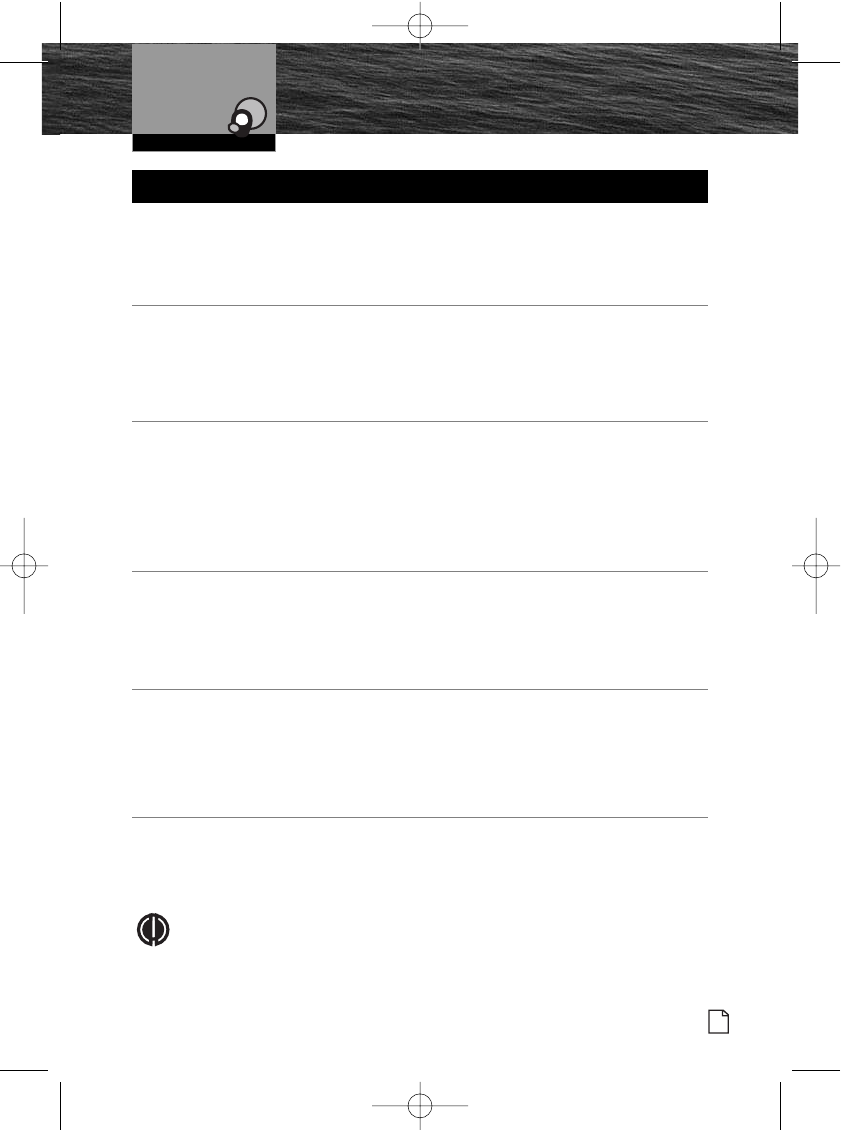
Asignaciones de canales (Español)
Correspondencia pública (operador marítimo)
Canales 24, 25, 26, 27, 28, 60, 61, 84, 84A, 85, 85A, 86, 86A, 87, 87A, 88*
Para llamadas a operadores marítimos en estaciones costeras públicas. Usted puede realizar y
recibir llamadas telefónicas a través de estas estaciones.
Operaciones portuarias
Canales 1A*, 5A*, 12*, 14*, 18, 19, 20A, 21, 22, 63A*, 65A, 66A, 73, 74, 75, 76, 77*, 79, 80, 81, 82
Usados para dirigir el movimiento de las embarcaciones dentro de áreas portuarias, esclusas o
canales. Los mensajes deberán estar relacionados con maniobras operacionales, movimientos
y seguridad de las embarcaciones.
Navegación
Canales 13, 67
Estos canales están disponibles para todas las embarcaciones. Los mensajes deberán estar
relacionados con la navegación, incluidas las maniobras para pasar o alcanzar otras
embarcaciones. Éstos también son los principales canales activos para la mayoría de las
esclusas y puentes levadizos. Usted deberá transmitir mensajes cortos y mantener la potencia
de salida en un vatio como máximo.
Control marítimo
Canal 17
Para comunicarse con embarcaciones y estaciones costeras operadas por entidades
gubernamentales locales o estatales. Los mensajes deberán estar relacionados con regulación y
control, asistencia o actividades de navegación.
Llamadas selectivas digitales
Canal 70
Este canal está reservado para solicitudes de auxilio, seguridad y llamadas de carácter general
que usen solamente técnicas de llamadas selectivas digitales. Las comunicaciones verbales
están prohibidas; el radio no puede transmitir mensajes de voz por este canal.
Meteorología
Canales Wx 1 a 10
Canales de recepción únicamente para difusión de información meteorológica NOAA y
canadiense. Usted no puede transmitir por estos canales.
NOTA
* El uso de estos canales está dedicado a las aplicaciones que aparecen en la lista, en
ciertas partes del país o para ciertos tipos de usuario solamente. Consulte las normas
de la FCC o a un operador de radio con experiencia antes de usarlos.
Apéndice
Asignación de canales de VHF
para radiocomunicación marítima
41
Nothing Comes Close to a Cobra®/Nada se compara a Cobra®
10222_MRHH125_En_F.qxp 6/28/07 5:03 PM Page 41
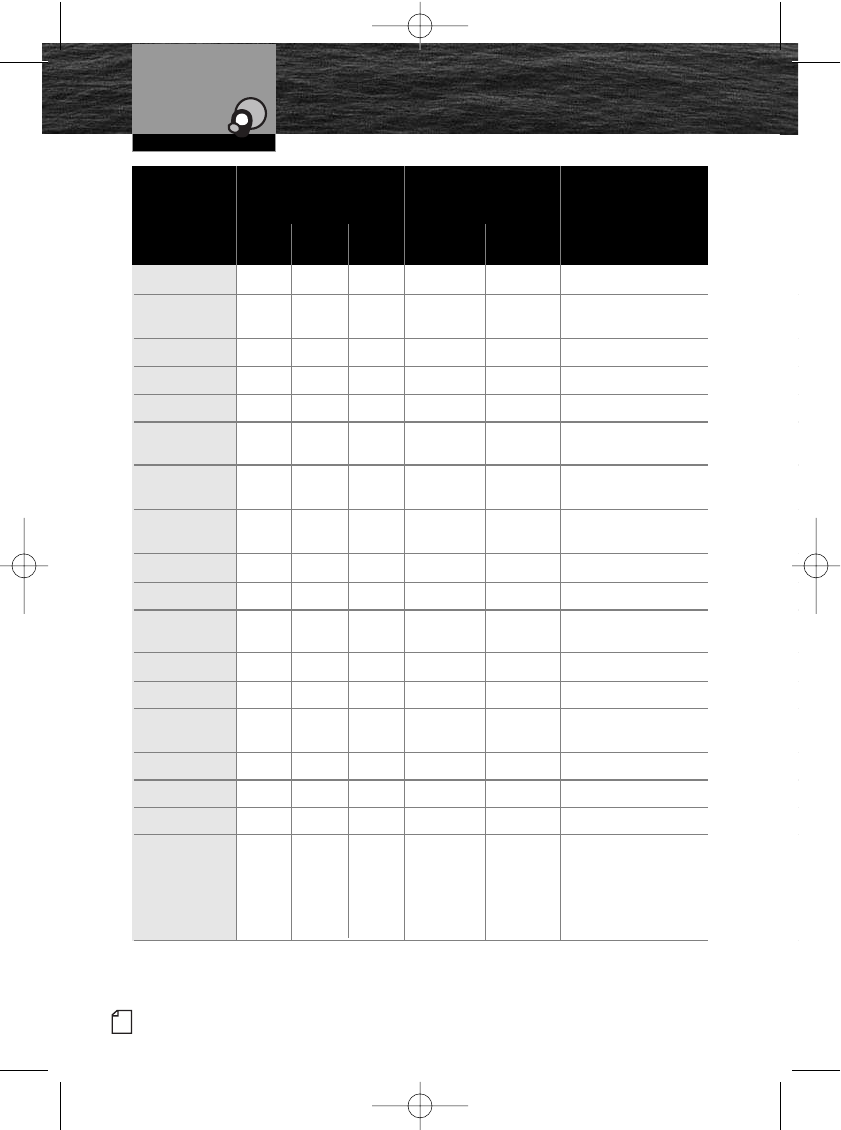
01 • • 156.050 160.650
01A •156.050 156.050
02 • • 156.100 160.700
03 • • 156.150 160.750
03A •156.150 156.150
04 • 156.200 160.800
04A • 156.200 156.200
05 •156.250 160.850
05A • • 156.250 156.250
06 • • • 156.300 156.300
07 •156.350 160.950
07A • • 156.350 156.350
08 • • • 156.400 156.400
09 • • • 156.450 156.450
10 • • • 156.500 156.500
11 • • • 156.550 156.550
12 • • • 156.600 156.600
13 • • • 156.650 156.650 1 watt USA and CAN
Appendix
VHF Marine
Channel Assignments
Channel Map
Mapa de canales
Channel
Number
Número
de canal
Power Limits
Límites de potencia
Frequency
Frecuencia
USA Int’l Canada Transmit Receive
EE.UU. Internac Canadá Transm. Recepción
1 vatio EE.UU. y Canadá
42 English/Español
10222_MRHH125_En_F.qxp 6/28/07 5:03 PM Page 42
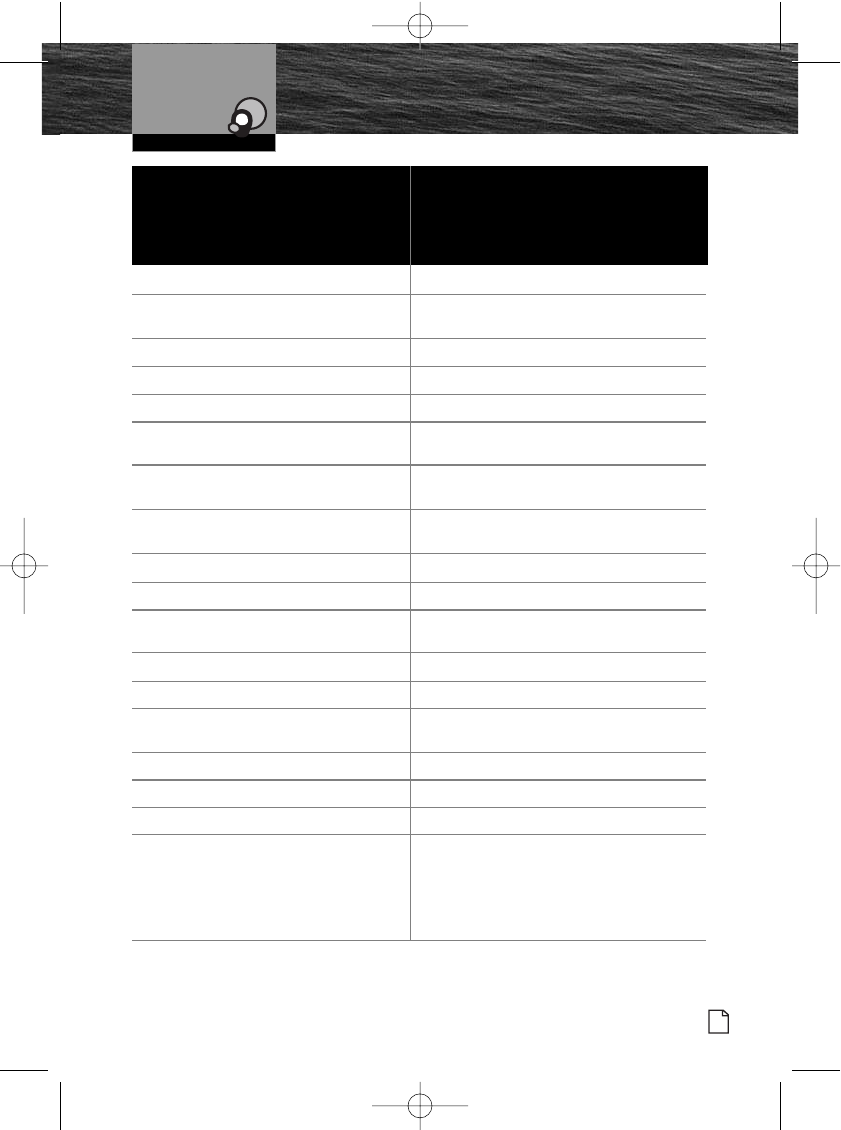
Public Correspondence (Marine Operator) Correspondencia pública (operador marítimo)
Port Operations and Commercial, Operaciones portuarias y comerciales;
VTS in selected areas VTS en áreas selectas
Public Correspondence (Marine Operator) Correspondencia pública (operador marítimo)
Public Correspondence (Marine Operator) Correspondencia pública (operador marítimo)
Government Only Entidades gubernamentales solamente
Public Correspondence (Marine Operator), Correspondencia pública (operador marítimo)
Port Operations, Ship Movement operaciones portuarias,movimiento de embarcaciones
West Coast (Coast Guard Only); Costa occidental (guardia costera solamente);
East Coast (Commercial Fishing) Costa oriental (pesca comercial)
Public Correspondence (Marine Operator), Correspondencia pública (operador marítimo)
Port Operations, Ship Movement operaciones portuarias,movimiento de embarcaciones
Port Operations, VTS in selected areas Operaciones portuarias; VTS en áreas selectas
Intership Safety Seguridad entre embarcaciones
Public Correspondence (Marine Operator), Correspondencia pública (operador marítimo)
Port Operations, Ship Movement operaciones portuarias,movimiento de embarcaciones
Commercial Comerciales
Commercial (Intership Only) Comercial (entre embarcaciones solamente)
Boater Calling Channel, Canal de llamada de la tripulación,
Non-Commercial (Recreational) no comercial (recreativo)
Commercial Comerciales
Commercial, VTS in selected areas Comercial; VTS en áreas selectas
Port Operations, VTS in selected areas Operaciones portuarias; VTS en áreas selectas
Intership Navigation Safety (Bridge-to-
Bridge). In U.S. waters, large vessels
maintain a listening watch on this channel.
Channel Use (English) Uso de canales (Español)
Appendix
VHF Marine
Channel Assignments
Seguridad marítima entre embarcaciones (de
puente de mando a puente de mando). En aguas
estadounidenses, las grandes embarcaciones se
mantienen vigilantes con sus radios
sintonizados en este canal
43
Nothing Comes Close to a Cobra®/Nada se compara a Cobra®
10222_MRHH125_En_F.qxp 6/28/07 5:03 PM Page 43
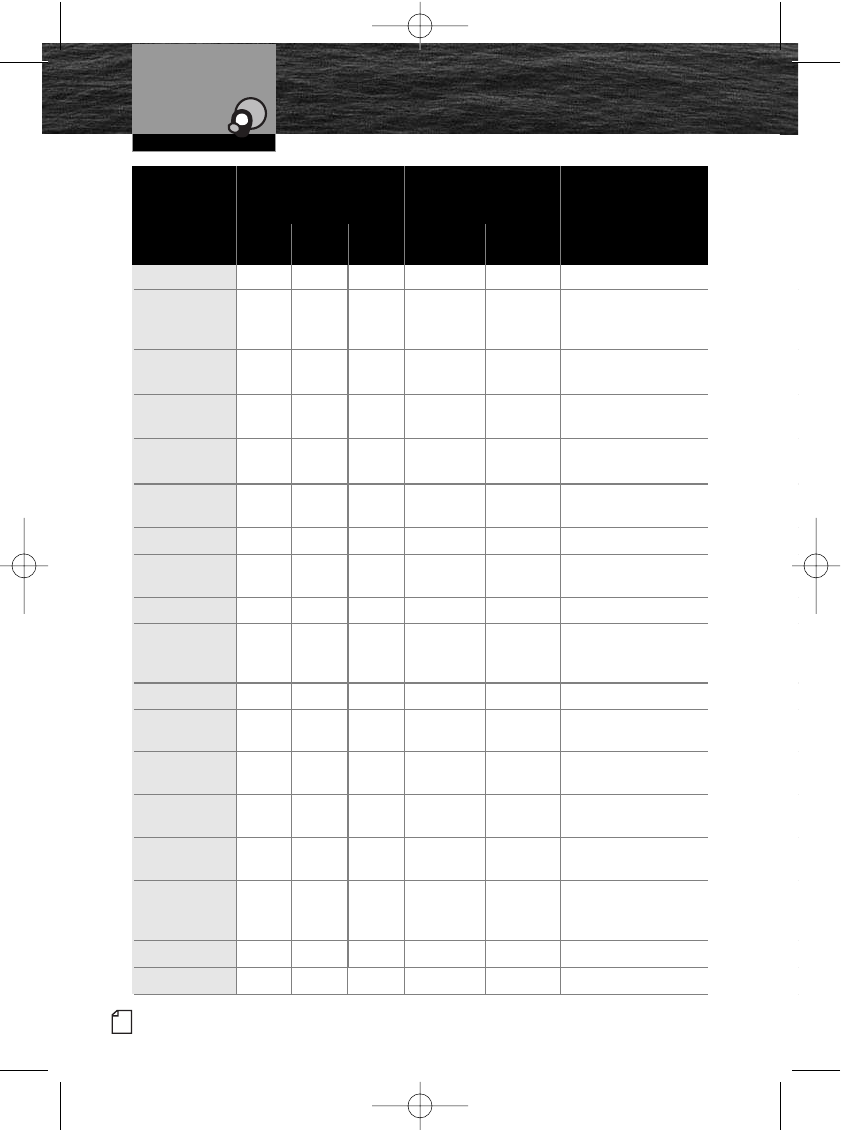
14 • • • 156.700 156.700
15 •Rx Only 156.750
15 • • 156.750 156.750 1 watt CAN and INT
16 • • • 156.800 156.800
17 • • • 156.850 156.850 1 watt USA and CAN
18 •156.900 161.500
18A • • 156.900 156.900
19 •156.950 161.550
19A • • 156.950 156.950
20 • • • 157.000 161.600 1 watt CAN
20A •157.000 157.000
21 • • 157.050 161.650
21A • • 157.050 157.050
21B •RX only 161.650
22 •157.100 161.700
22A • • 157.100 157.100
23 • • 157.150 161.750
23A •157.150 157.150
Channel Map
Mapa de canales
Channel
Number
Número
de canal
Power Limits
Límites de potencia
Frequency
Frecuencia
USA Int’l Canada Transmit Receive
EE.UU. Internac Canadá Transm. Recepción
Appendix
VHF Marine
Channel Assignments
1 vatio Canadá y Internac.
1 vatio EE.UU. y Canadá
1 vatio Canadá
44 English/Español
10222_MRHH125_En_F.qxp 6/28/07 5:03 PM Page 44
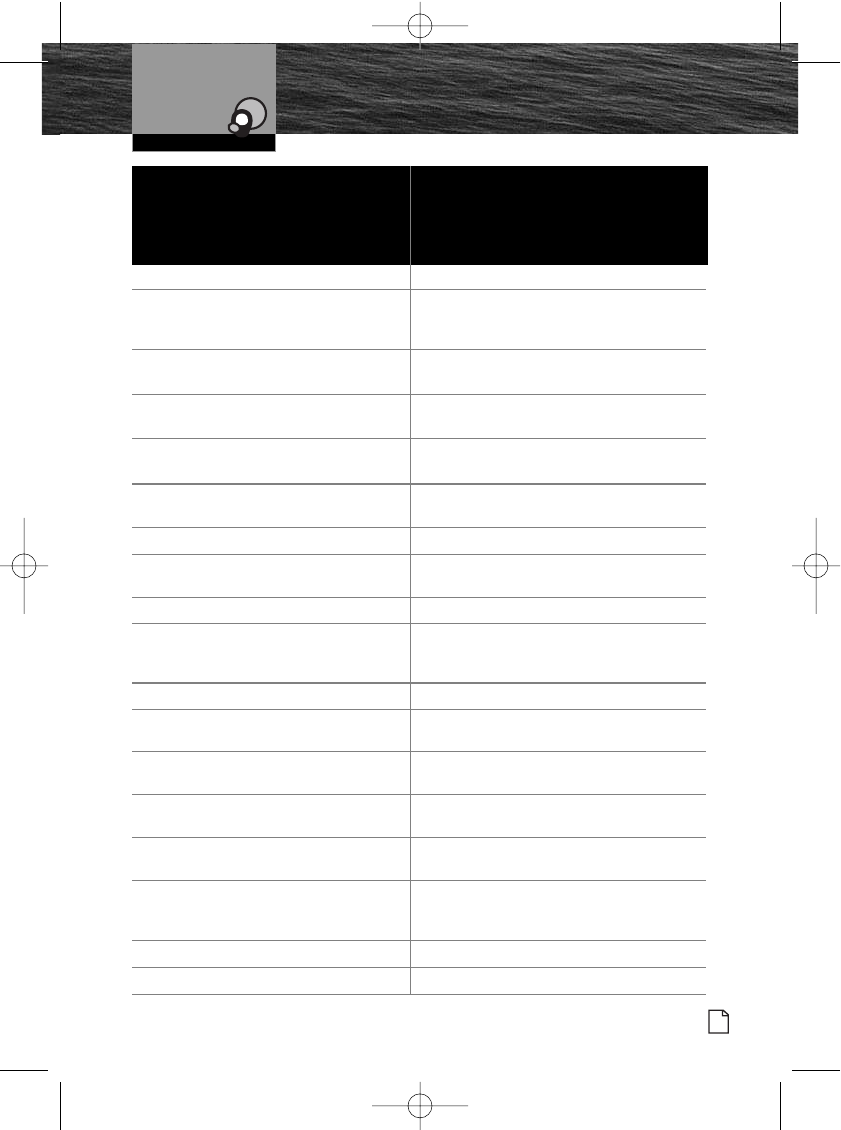
Port Operations, VTS in selected areas Operaciones portuarias; VTS en áreas selectas
Environmental (Receive Only). Medioambiental (recepción solamente).
Usado por radiobalizas de localización
de siniestros (EPIRB) clase C
Canada (EPIRB Buoys Only); International Canadá (boyas de EPIRB solamente);
(On-Board Communication) Internacional (comunicación de a bordo)
International Distress, Safety and Calling Llamadas, seguridad y solicitud
de auxilio internacional
State Controlled (U.S.A. Only) Controlado a nivel estatal (EE.UU. solamente)
Port Operations, Ship Movement Operaciones portuarias,
movimiento de embarcaciones
Commercial Comerciales
Port Operations, Ship Movement Operaciones portuarias,
movimiento de embarcaciones
Commercial Comerciales
Canada (Coast Guard Only); International Canadá (guardia costera solamente);
(Port Operations, Ship Movement) Internacional (operaciones portuarias,
movimiento de embarcaciones)
Port Operations Operaciones portuarias
Port Operations, Ship Movement Operaciones portuarias,
movimiento de embarcaciones
U.S. (Government Only); EE.UU. (entidades gubernamentales solamente);
Canada (Coast Guard Only) Canadá (guardia costera solamente)
Coast Guard Only – Weather Broadcasts Solamente Guardacostas –
Transmisiones Meteorológicas
Port Operations, Ship Movement Operaciones portuarias,
movimiento de embarcaciones
U.S. and Canadian Coast Guard Liaison and Enlace entre las guardias costeras estadounidenses
Maritime Safety Information Broadcasts that y canadienses, y difusión de información sobre
are announced on Channel 16 seguridad marítima anunciada por el canal 16
Public Correspondence (Marine Operator) Correspondencia pública (operador marítimo)
Government Only Entidades gubernamentales solamente
Channel Use (English) Uso de canales (Español)
Appendix
VHF Marine
Channel Assignments
45
Nothing Comes Close to a Cobra®/Nada se compara a Cobra®
10222_MRHH125_En_F.qxp 6/28/07 5:03 PM Page 45
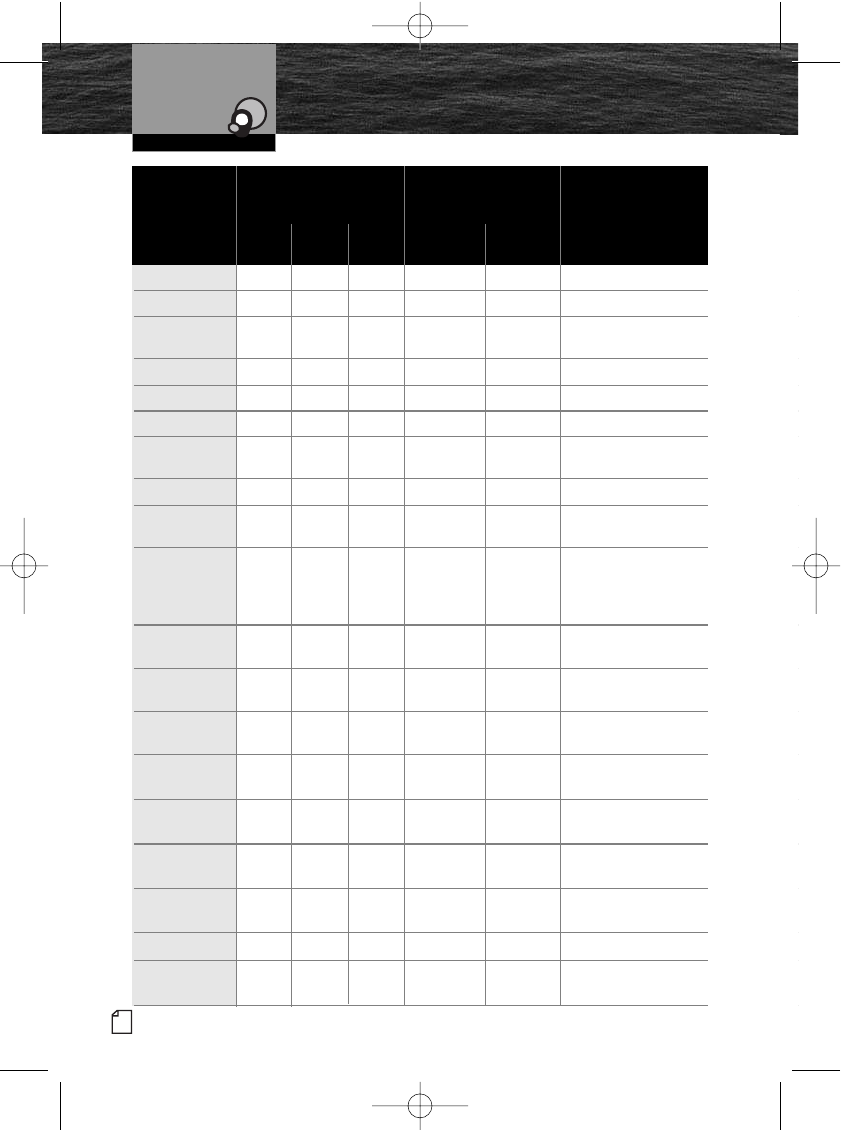
24 • • • 157.200 161.800
25 • • • 157.250 161.850
25B •RX only 161.850
26 • • • 157.300 161.900
27 • • • 157.350 161.950
28 • • • 157.400 162.000
28B •RX only 162.000
60 • • 156.025 160.625
61 •156.075 160.675
61A • • 156.075 156.075
62 •156.125 160.725
62A •156.125 156.125
63 •156.175 160.775
63A •156.175 156.175
64 • • 156.225 160.825
64A • • 156.225 156.225
65 •156.275 160.875
65A • • • 156.275 156.275
66 •156.325 160.925
Channel Map
Mapa de canales
Channel
Number
Número
de canal
Power Limits
Límites de potencia
Frequency
Frecuencia
USA Int’l Canada Transmit Receive
EE.UU. Internac Canadá Transm. Recepción
Appendix
VHF Marine
Channel Assignments
46 English/Español
10222_MRHH125_En_F.qxp 6/28/07 5:03 PM Page 46
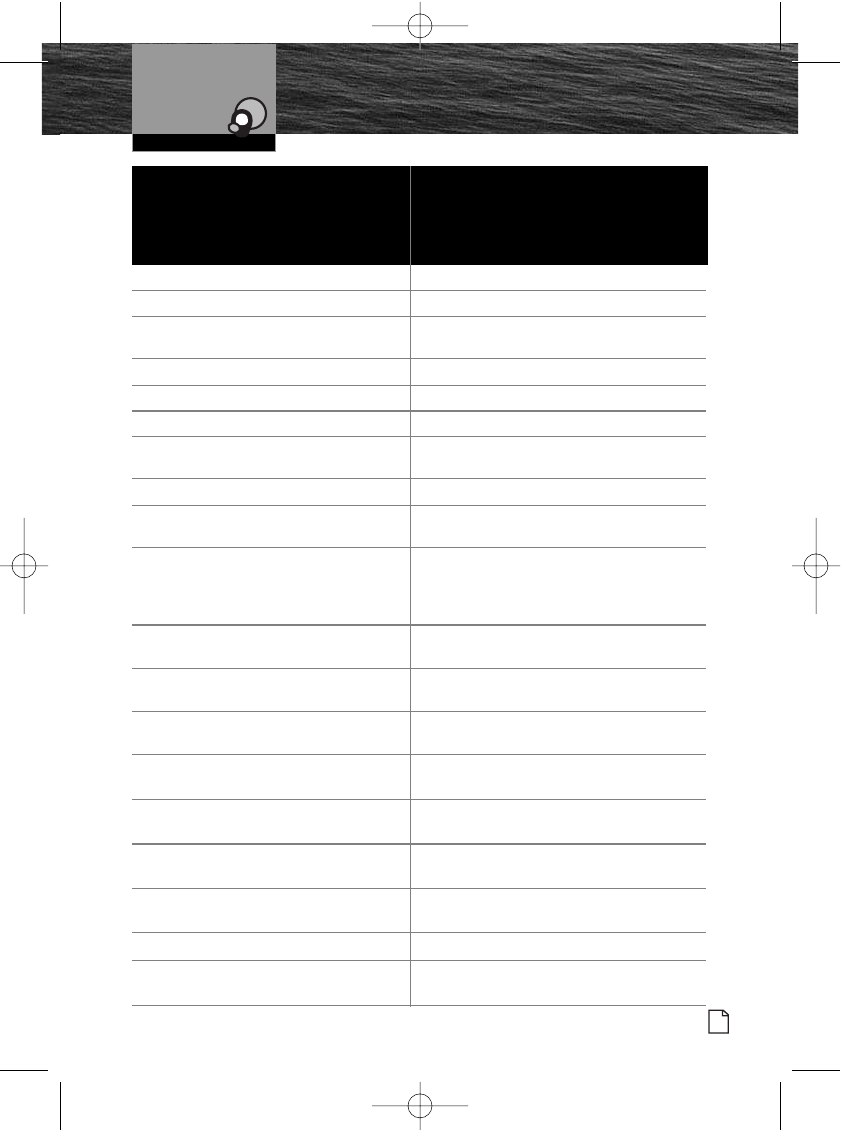
Public Correspondence (Marine Operator) Correspondencia pública (operador marítimo)
Public Correspondence (Marine Operator) Correspondencia pública (operador marítimo)
Safety: Continuous Marine Broadcast (CMB) Seguridad: Transmisión Marítima Continua (CMB)
service by MCTS Canada servicio por MCTS Canadá
Public Correspondence (Marine Operator) Correspondencia pública (operador marítimo)
Public Correspondence (Marine Operator) Correspondencia pública (operador marítimo)
Public Correspondence (Marine Operator) Correspondencia pública (operador marítimo)
Safety: Continuous Marine Broadcast (CMB) Seguridad: Transmisión Marítima Continua (CMB)
service by MCTS Canada servicio por MCTS Canadá
Public Correspondence (Marine Operator) Correspondencia pública (operador marítimo)
Public Correspondence (Marine Operator) Correspondencia pública (operador marítimo),
Port Operation, Ship Movement operaciones portuarias, movimiento de embarcaciones
U.S. (Government Only); Canada (Coast
Guard Only); West Coast (Coast Guard
Only); East Coast (Commercial Fishing)
Public Correspondence (Marine Operator), Correspondencia pública (operador marítimo),
Port Operations, Ship Movement operaciones portuarias, movimiento de embarcaciones
West Coast (Coast Guard Only); Costa occidental (guardia costera solamente);
East Coast (Commercial Fishing) Costa oriental (pesca comercial)
Public Correspondence (Marine Operator), Correspondencia pública (operador marítimo),
Port Operations, Ship Movement operaciones portuarias, movimiento de embarcaciones
Port Operations and Commercial, Operaciones portuarias y comerciales;
VTS in selected areas VTS en áreas selectas
Public Correspondence (Marine Operator), Correspondencia pública (operador marítimo),
Port Operations, Ship Movement operaciones portuarias, movimiento de embarcaciones
U.S. (Government Only); EE.UU. (entidades gubernamentales
Canada (Commercial Fishing) solamente); Canadá (pesca comercial)
Public Correspondence (Marine Operator), Correspondencia pública (operador marítimo),
Port Operations, Ship Movement operaciones portuarias, movimiento de embarcaciones
Port Operations Operaciones portuarias
Public Correspondence (Marine Operator), Correspondencia pública (operador marítimo),
Port Operations, Ship Movement operaciones portuarias, movimiento de embarcaciones
Channel Use (English) Uso de canales (Español)
Appendix
VHF Marine
Channel Assignments
EE.UU. (entidades gubernamentales
solamente); Canadá (guardia costera
solamente); Costa occidental (guardia costera
solamente); Costa oriental (pesca comercial)
47
Nothing Comes Close to a Cobra®/Nada se compara a Cobra®
10222_MRHH125_En_F.qxp 6/28/07 5:03 PM Page 47
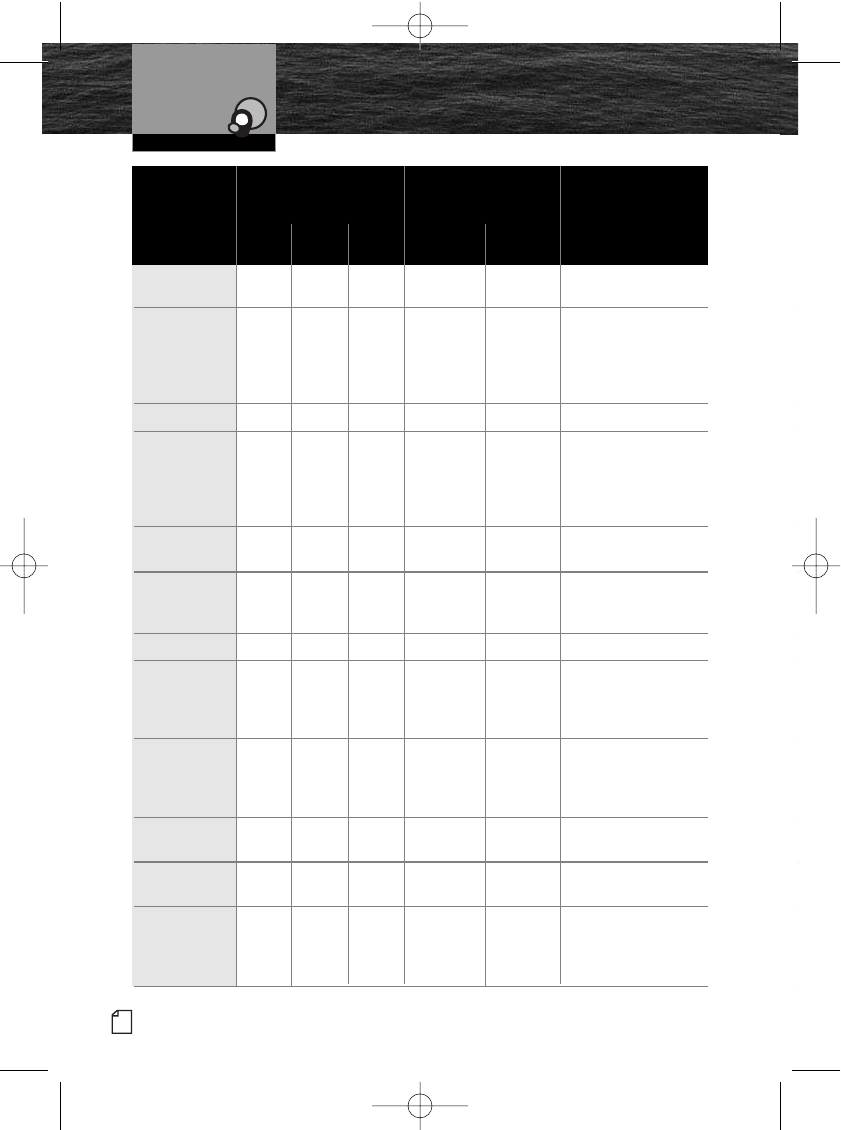
66A • • • 156.325 156.325 1 watt CAN
67 • • • 156.375 156.375 1 watt USA
68 • • • 156.425 156.425
69 • • • 156.475 156.475
70 • • • RX only 156.525
71 • • • 156.575 156.575
72 • • • 156.625 156.625
73 • • • 156.675 156.675
74 • • • 156.725 156.725
75 •156.775 156.775 1 watt Only Int.
76 •156.825 156.825 1 watt Only Int.
77 • • • 156.875 156.875 1 watt USA and CAN
Channel Map
Mapa de canales
Channel
Number
Número
de canal
Power Limits
Límites de potencia
Frequency
Frecuencia
USA Int’l Canada Transmit Receive
EE.UU. Internac Canadá Transm. Recepción
Appendix
VHF Marine
Channel Assignments
1 vatio Canadá
1 vatio EE.UU.
Sólo 1 vatio Int.
Sólo 1 vatio Int.
1 vatio EE.UU. y Canadá
48 English/Español
10222_MRHH125_En_F.qxp 6/28/07 5:03 PM Page 48
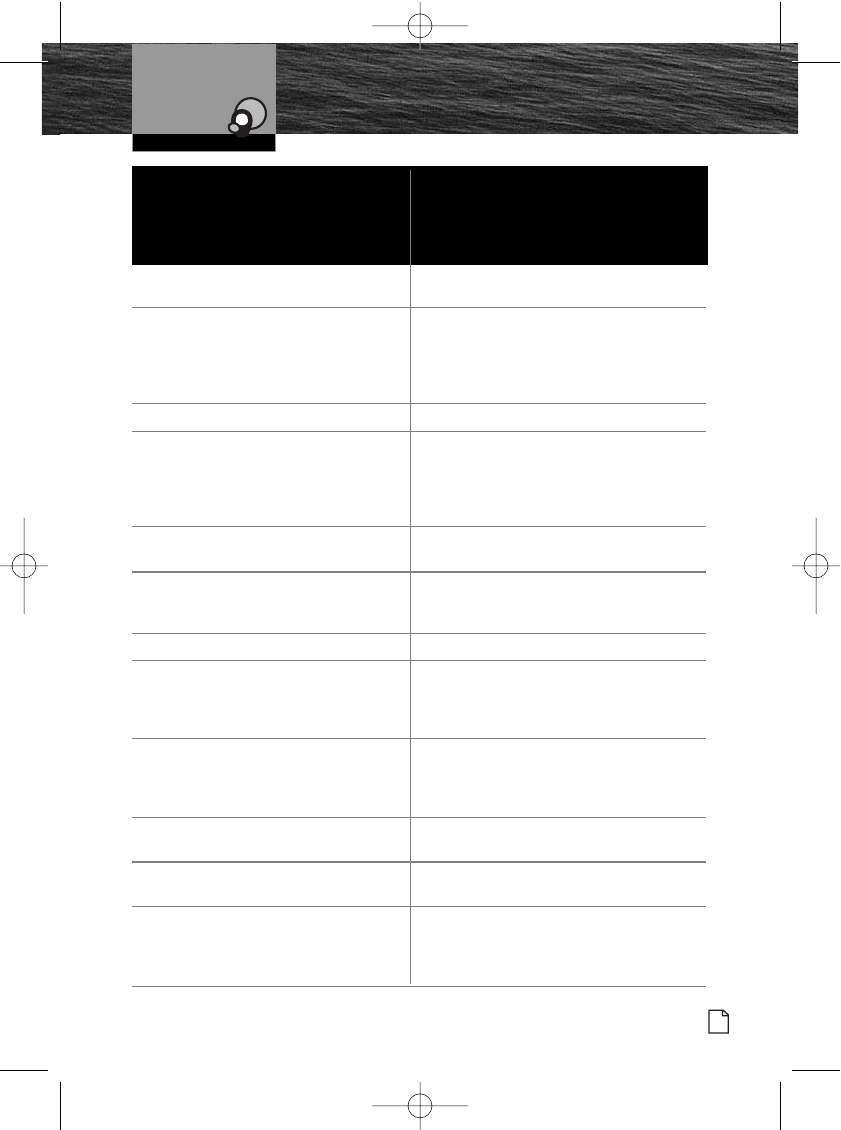
Port Operations Operaciones portuarias
Non-Commercial (Recreational) No comercial (recreativo)
U.S. (Non-Commercial, Recreational); Canada
(Commercial Fishing Only); International
(Intership, Port Operations, Ship Movement)
Digital Selective Calling Llamadas selectivas digitales
(Voice communications not allowed) (las comunicaciones verbales están prohibidas)
U.S. and Canada (Non-Commercial, Recreational); EE.UU. y Canadá (no comercial, recreativo);
International (Port Operations, Ship Movement) Internacional (operaciones portuarias,
movimiento de embarcaciones)
Non-Commercial (Intership Only) No comercial (entre embarcaciones solamente)
U.S. (Port Operations); Canada (Commercial EE.UU. (operaciones portuarias); Canadá (pesca
Fishing Only); International (Intership, comercial solamente); Internacional (comunicaciones
Port Operations, Ship Movement) entre embarcaciones, operaciones portuarias,
movimiento de embarcaciones)
U.S. (Port Operations); Canada (Commercial EE.UU. (operaciones portuarias); Canadá (pesca
Fishing Only); International (Intership, comercial solamente); Internacional (comunicaciones
Port Operations, Ship Movement) entre embarcaciones, operaciones portuarias,
movimiento de embarcaciones)
Port Operations (Intership Only) Operaciones portuarias
(entre embarcaciones solamente)
Port Operations (Intership Only) Operaciones portuarias
(entre embarcaciones solamente)
Port Operations (Intership only). Restricted to Operaciones portuarias (entre embarcaciones
communications with pilots for movement and solamente). Restringido a comunicaciones con
docking of ships. pilotos para el movimiento y atraque de
embarcaciones.
Channel Use (English) Uso de canales (Español)
Appendix
VHF Marine
Channel Assignments
U.S. (Commercial). Used for bridge-to-bridge
communications in lower Mississippi River
(Intership Only); Canada (Commercial Fishing), S&R
EE.UU. (comercial). Usado para comunicaciones
de puente de mando a puente de mando en la
parte baja del Río Misisipí (entre embarcaciones
solamente); Canadá (pesca comercial)
(transmisión y recepción)
EE.UU. (no comercial, recreativo); Canadá
(pesca comercial solamente); Internacional
(comunicaciones entre embarcaciones,
operaciones portuarias, movimiento de
embarcaciones)
49
Nothing Comes Close to a Cobra®/Nada se compara a Cobra®
10222_MRHH125_En_F.qxp 6/28/07 5:03 PM Page 49
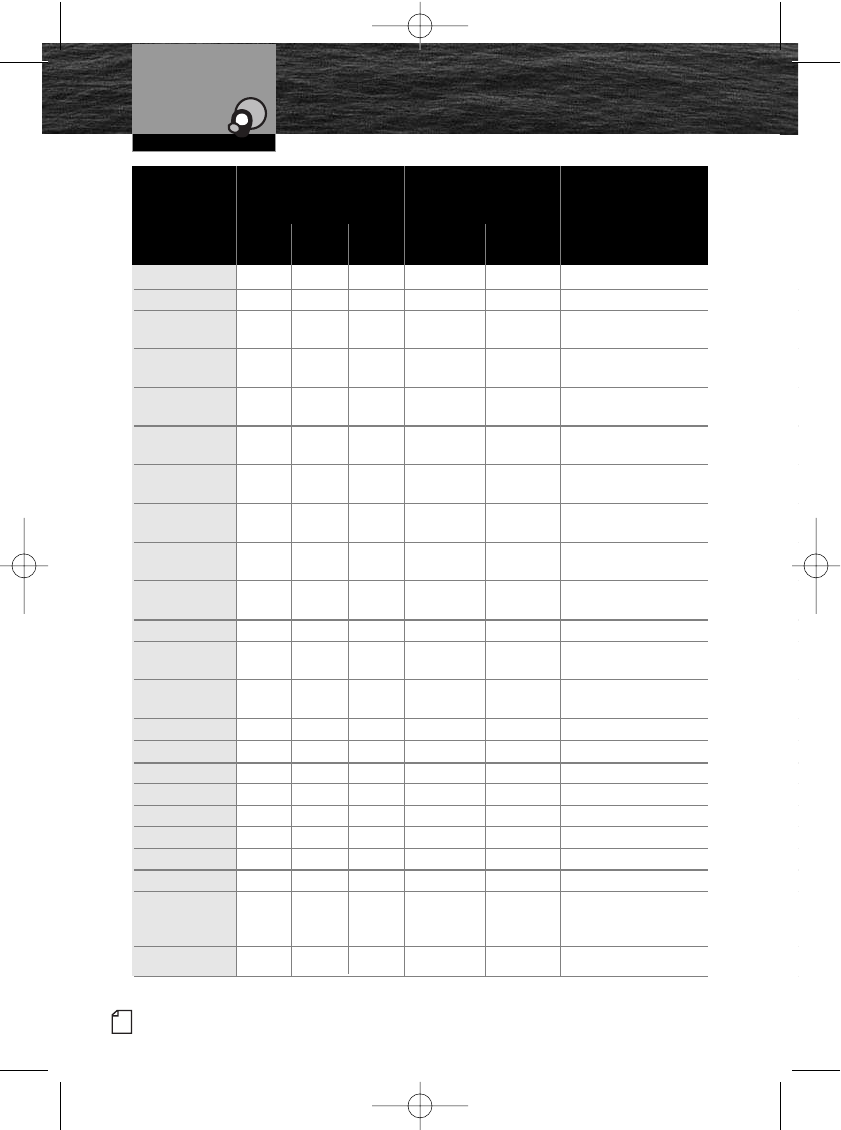
78 •156.925 161.525
78A • • 156.925 156.925
79 •156.975 161.575
79A • • 156.975 156.975
80 •157.025 161.625
80A • • 157.025 157.025
81 •157.075 161.675
81A • • 157.075 157.075
82 •157.125 161.725
82A • • 157.125 157.125
83 • • 157.175 161.775
83A •157.175 157.175
83B • • RX only 161.650
84 • • • 157.225 161.825
84A •157.225 157.225
85 • • • 157.275 161.875
85A •157.275 157.275
86 • • • 157.325 161.925
86A •157.325 157.325
87 • • • 157.375 161.975
87A •157.375 157.375
88 • • • 157.425 162.025
88A •157.425 157.425
Appendix
VHF Marine
Channel Assignments
Channel Map
Mapa de canales
Channel
Number
Número
de canal
Power Limits
Límites de potencia
Frequency
Frecuencia
USA Int’l Canada Transmit Receive
EE.UU. Internac Canadá Transm. Recepción
50
English/Español
10222_MRHH125_En_F.qxp 6/28/07 5:03 PM Page 50
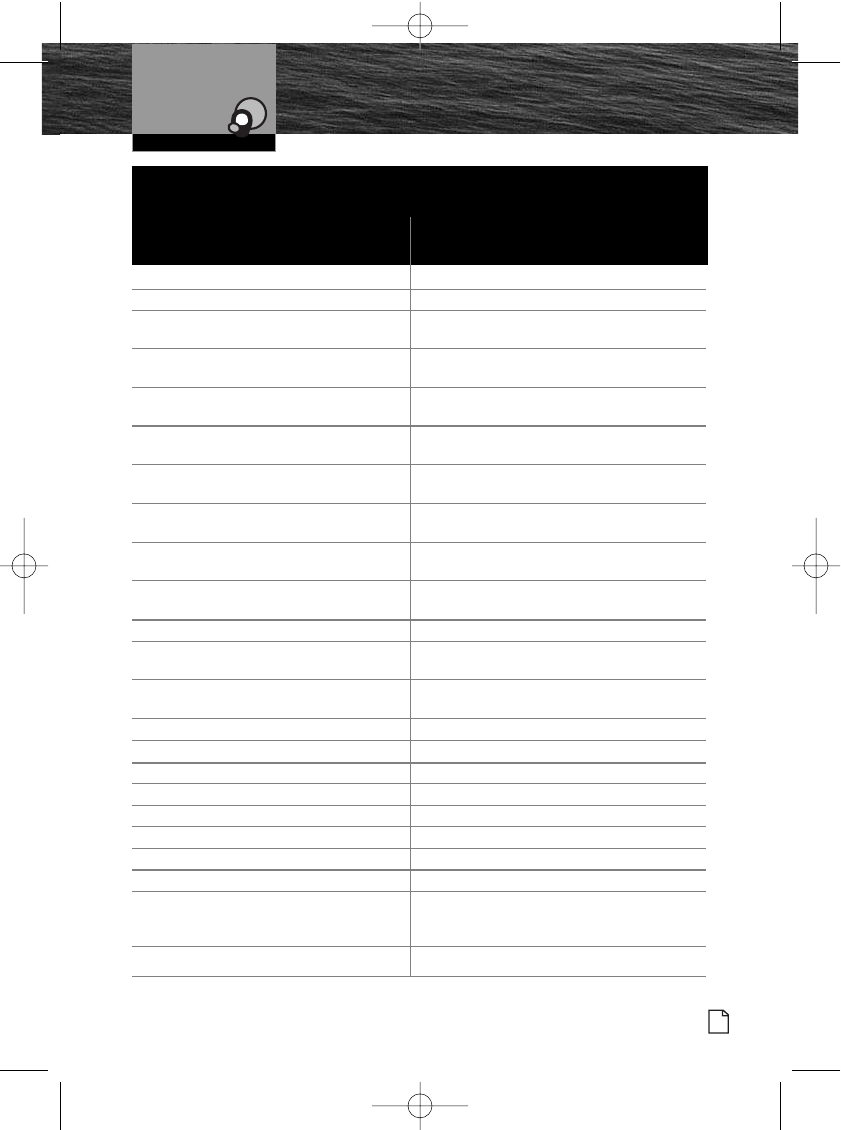
Public Correspondence (Marine Operator) Correspondencia pública (operador marítimo)
Non-Commercial (Recreational) No comercial (recreativo)
Port Operations, Ship Movement Operaciones portuarias,
movimiento de embarcaciones
Commercial (Also Non-Comercial Comercial (en los Grandes
only in Great Lakes) Lagos también no comercial)
Port Operations, Ship Movement Operaciones portuarias,
movimiento de embarcaciones
Commercial (Also Non-Commercial Comercial (en los Grandes
only in Great Lakes) Lagos también no comercial)
Port Operations, Ship Movement Operaciones portuarias,
movimiento de embarcaciones
U.S. (Government Only; Environmental EE.UU. (entidades gubernamentales solamente;
Protection Operations) operaciones de protección medioambiental)
Public Correspondence (Marine Operator), Correspondencia pública (operador marítimo),
Port Operation, Ship Movement operaciones portuarias, movimiento de embarcaciones
U.S. (Government Only); Canada EE.UU. (entidades gubernamentales solamente);
(Coast Guard Only) Canadá (guardia costerasolamente)
Canada (Coast Guard Only) Canadá (guardia costera solamente))
U.S. (Government Only); Canada EE.UU. (entidades gubernamentales solamente);
(Coast Guard Only) Canadá (guardia costerasolamente)
Coast Guard Only – Weather Broadcasts Solamente Guardacostas –
Transmisiones Meteorológicas
Public Correspondence (Marine Operator) Correspondencia pública (operador marítimo)
Public Correspondence (Marine Operator) Correspondencia pública (operador marítimo)
Public Correspondence (Marine Operator) Correspondencia pública (operador marítimo)
Public Correspondence (Marine Operator) Correspondencia pública (operador marítimo)
Public Correspondence (Marine Operator) Correspondencia pública (operador marítimo)
Public Correspondence (Marine Operator) Correspondencia pública (operador marítimo)
Public Correspondence (Marine Operator) Correspondencia pública (operador marítimo)
Public Correspondence (Marine Operator) Correspondencia pública (operador marítimo)
Public Correspondence (Ship to Coast). Correspondencia pública (entre embarcación y costa).
In U.S. only within 75 miles of Canadian Border. En los EE.UU., solamente dentro de los casi
121 kilómetros (75 millas) de la frontera canadiense
Commercial Intership only Comercial entre embarcaciones solamente
Appendix
VHF Marine
Channel Assignments
Channel Use (English) Uso de canales (Español)
51
Nothing Comes Close to a Cobra®/Nada se compara a Cobra®
10222_MRHH125_En_F.qxp 6/28/07 5:03 PM Page 51
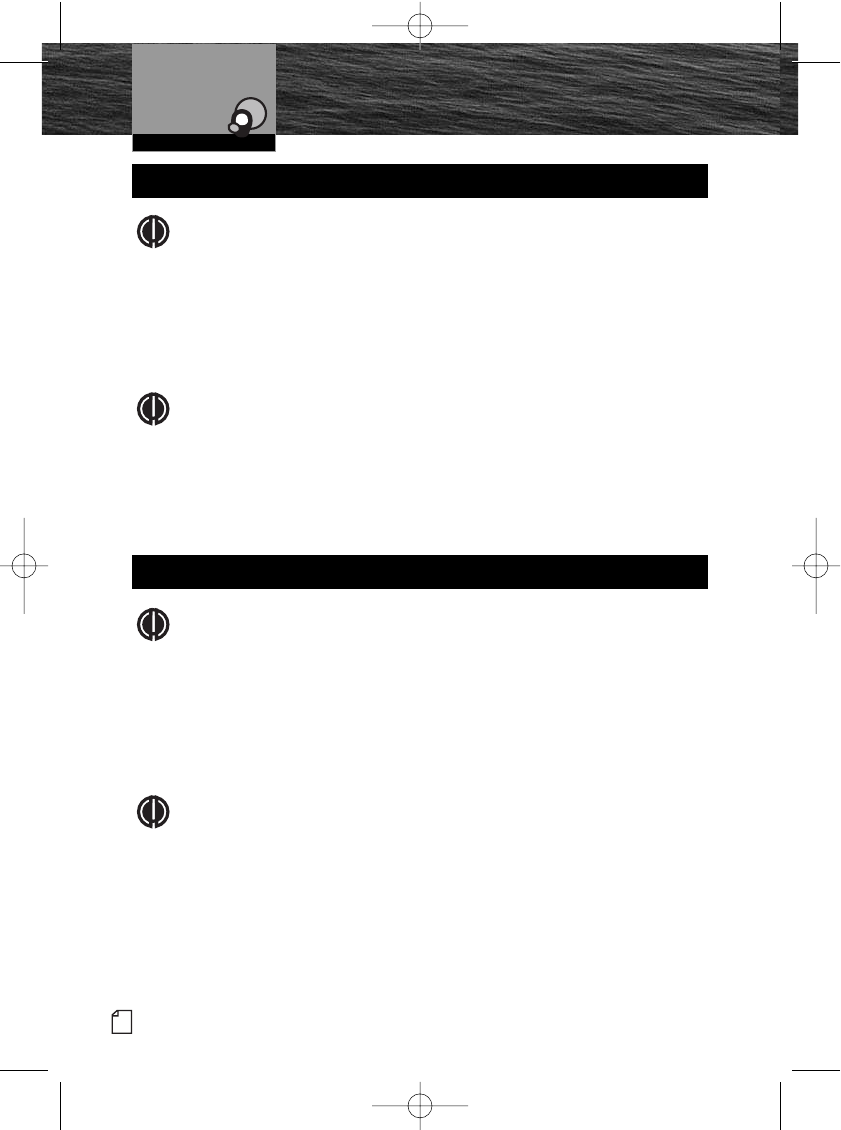
Appendix
VHF Marine Channel
Assignments
NOTE
Many of the plain-numbered channels, such as 01, 02 and 03, transmit and
receive on different frequencies. This is termed duplex operation. The rest of the
plain-numbered channels and all of the A channels, such as 01A, 03A and
04A, transmit and receive on a single frequency, which is termed simplex
operation. Your radio automatically adjusts to these conditions. When in simplex
operation, the A icon will appear on the LCD (see illustration on page A3).
NOTE
All channels are preprogrammed at the factory according to international
regulations and those of the FCC (U.S.A.) and Industry Canada (Canada).
They cannot be altered by the user nor can modes of operation be changed
between simplex and duplex.
NOTA
Muchos de los canales de números simples, como 01, 02 y 03, transmiten
y reciben en diferentes frecuencias. A esto se le llama operación dúplex. El
resto de los canales de números simples y todos los canales A, como 01A,
03A y 04A, transmiten y reciben en una sola frecuencia, a la que se le llama
operación simple (simplex). Su radio se ajusta automáticamente a estas
condiciones. Cuando esté en operación simple, el icono A aparecerá en la
pantalla de cristal líquido (vea la ilustración de la página A3).
NOTA
Todos los canales vienen programados previamente de fábrica conforme
a los reglamentos internacionales y a los de la FCC (EE. UU) e Industry Canada
(Canadá). No pueden ser alterados por el usuario, así como tampoco pueden
cambiarse los modos de operación entre simple y dúplex.
52
English/Español
VHF Marine Channel Assignments (English)
Asignación de canales de VHF para radiocomunicación marítima (Español)
10222_MRHH125_En_F.qxp 6/28/07 5:03 PM Page 52
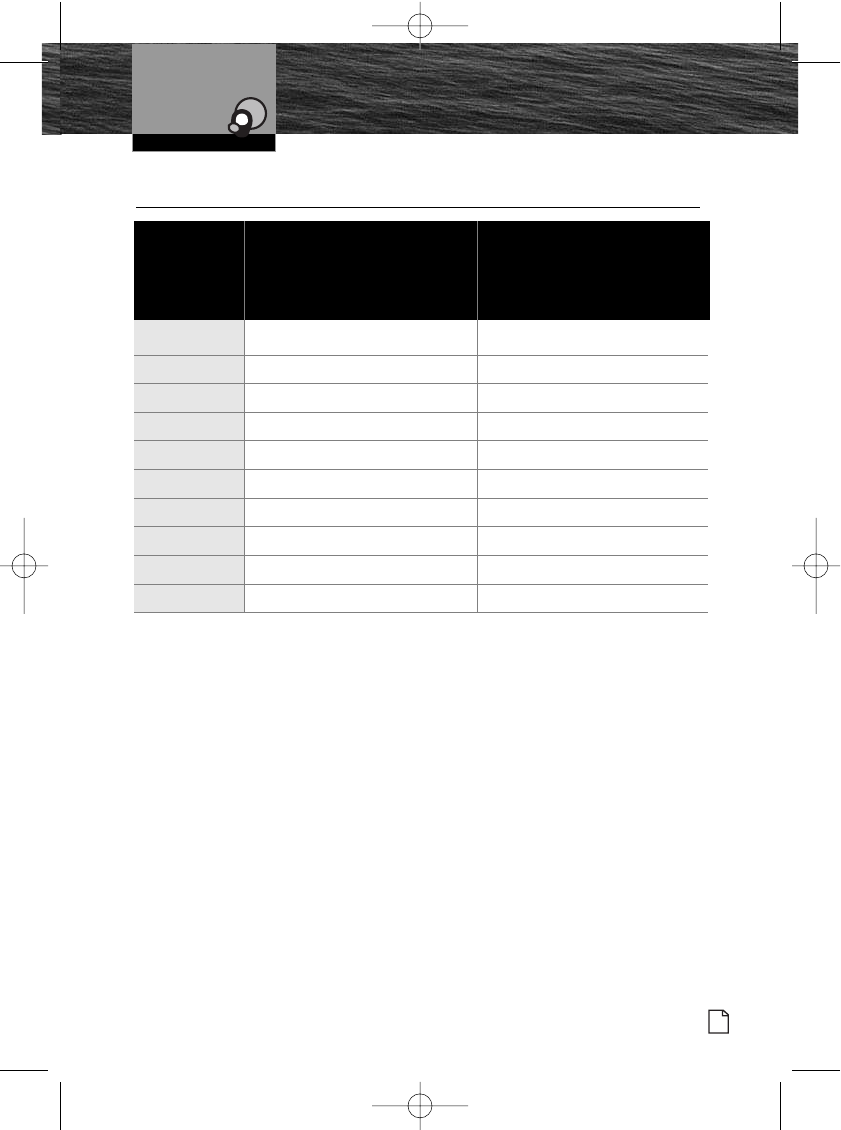
Appendix
Weather Channel
Assignments
53
Weather Channel Assignments
Asignaciones de canales meteorológicos •
RX Frequency MHz
Frecuencia de recepción (MHz)
Channel
Number
Número
de canal
1162.550 NOAA
2162.400 NOAA
3162.475 NOAA
4162.425 NOAA
5162.450 NOAA
6162.500 NOAA
7162.525 NOAA
8161.650 Canada
9161.775 Canada
10 163.275 NOAA
Weather Channel
Weather Channel
Nothing Comes Close to a Cobra®/Nada se compara a Cobra®
10222_MRHH125_En_F.qxp 6/28/07 5:03 PM Page 53
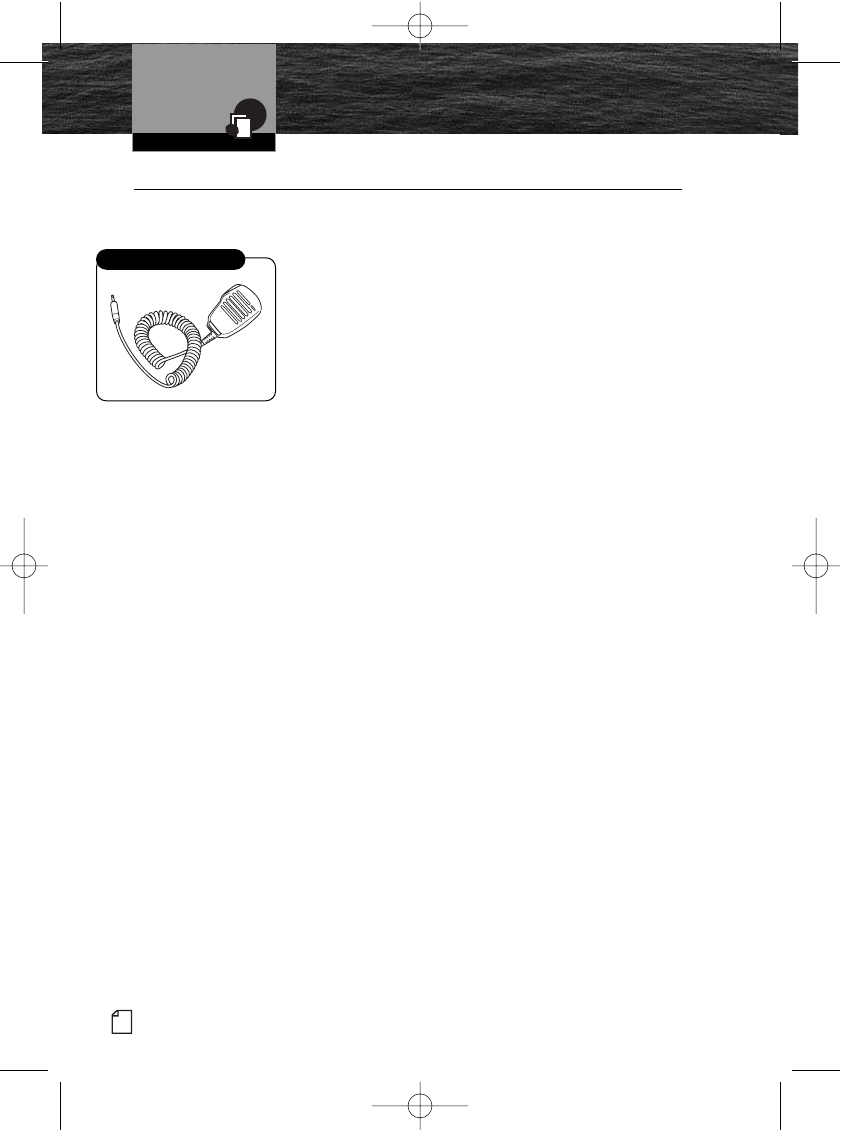
Accessories •
Optional Cobra accessories can enhance the use of the radio and offer
convenience to the end user.
Lapel Speaker/Microphone
A speaker/microphone, that attaches to your lapel.
Order P/N CM 330-001.
This unique accessory allows you to wear the radio on
your belt while still being able to communicate with other
vessels. A small Push to Talk button on the lapel speaker/
microphone allows you to answer any incoming call.
Lapel Speaker/Microphone
VHF Marine Radio Protocols Accessories
Accessories
54 English
10222_MRHH125_En_F.qxp 6/28/07 5:03 PM Page 54